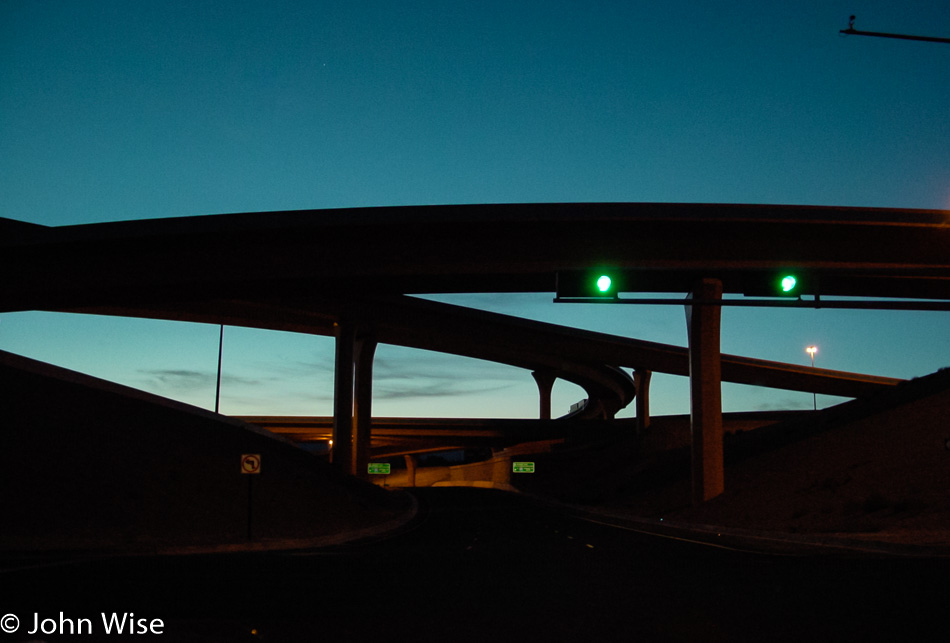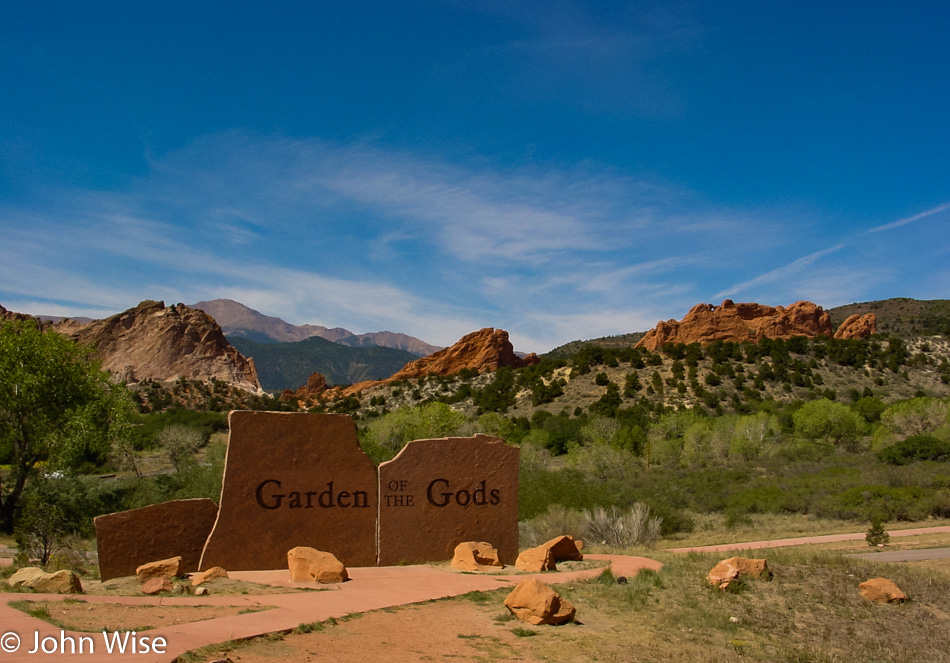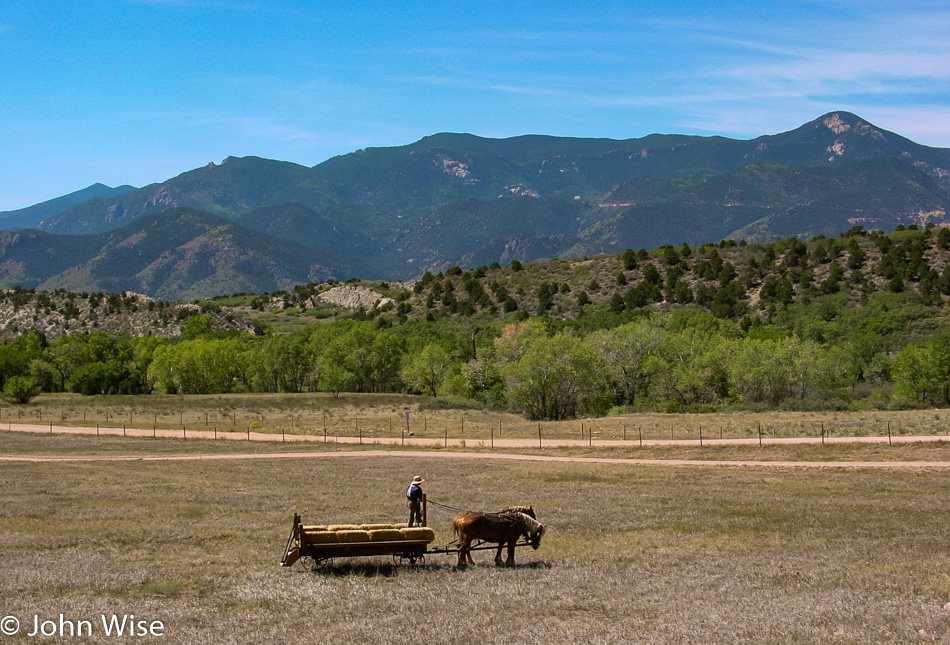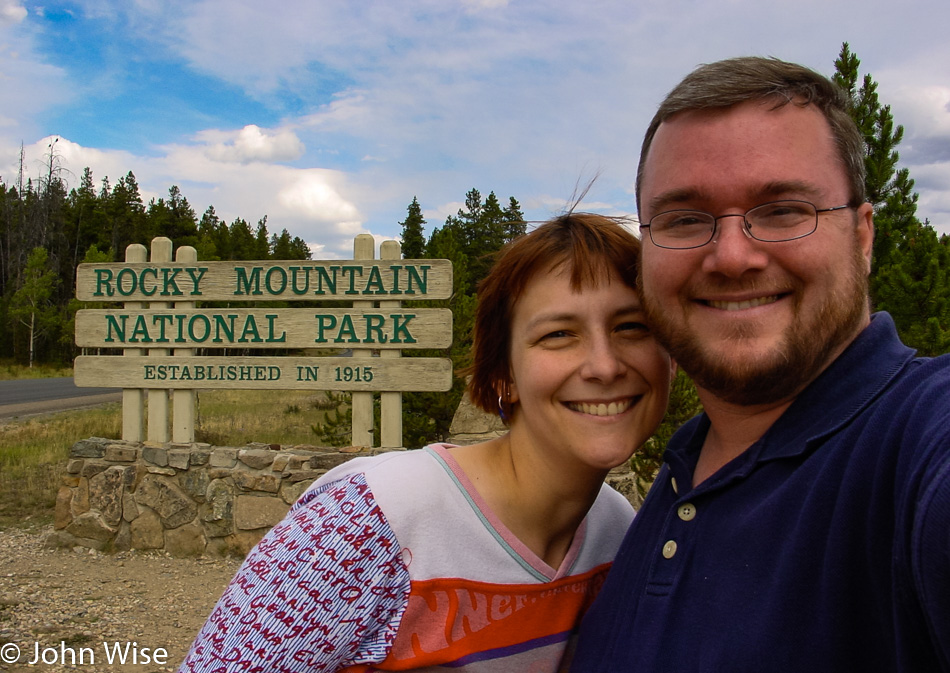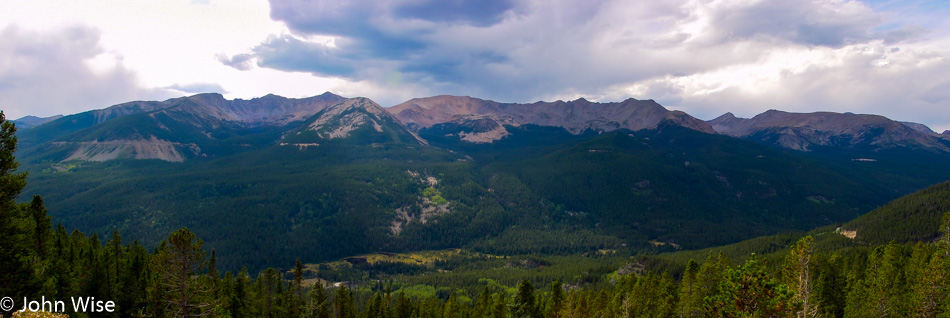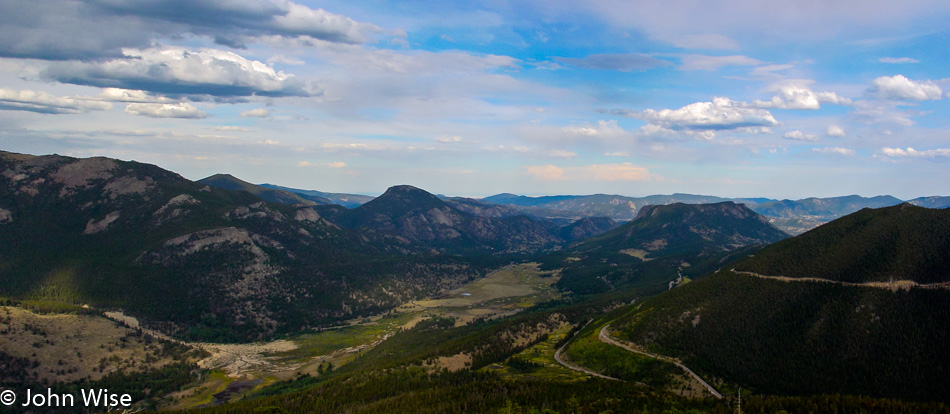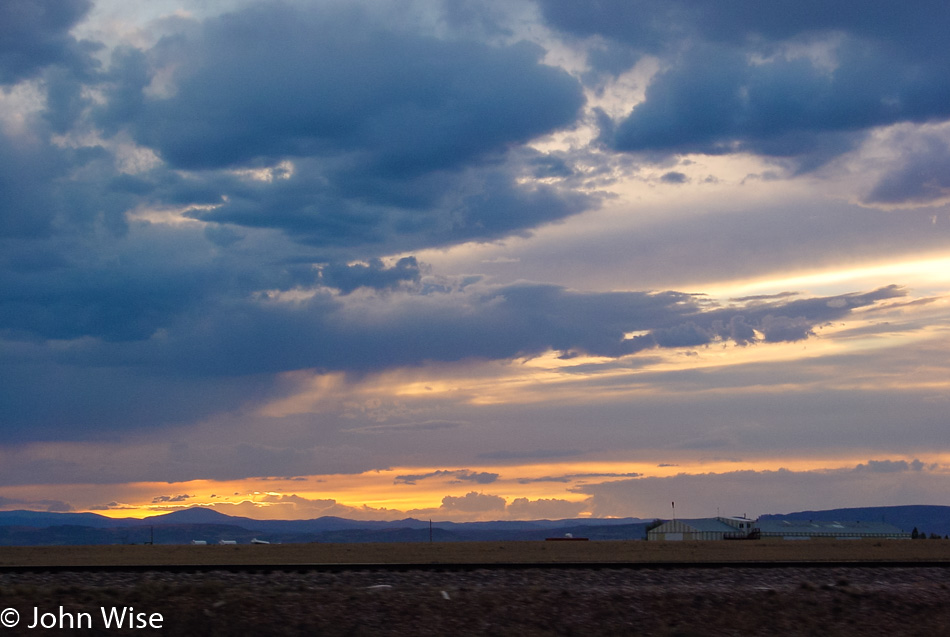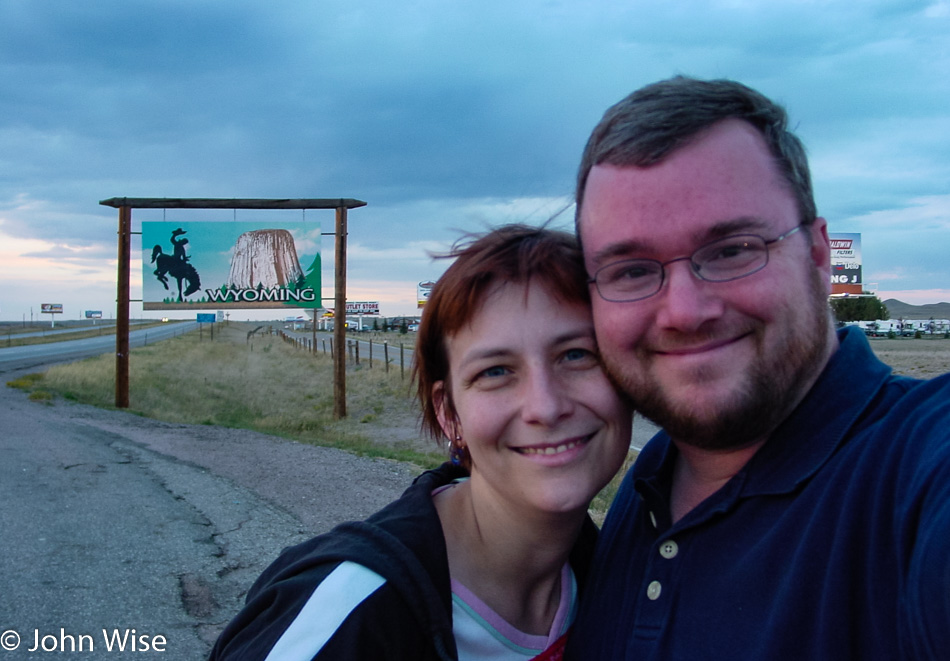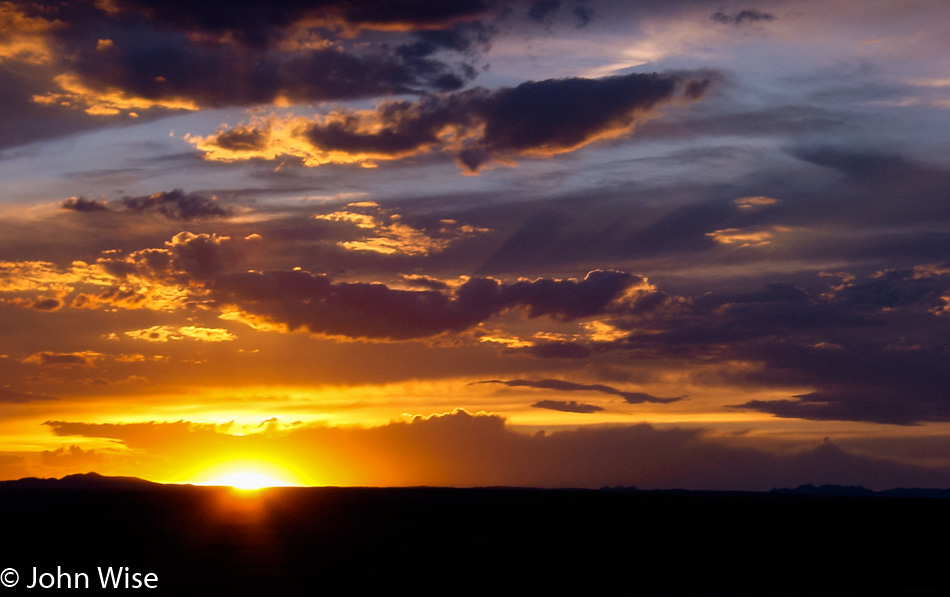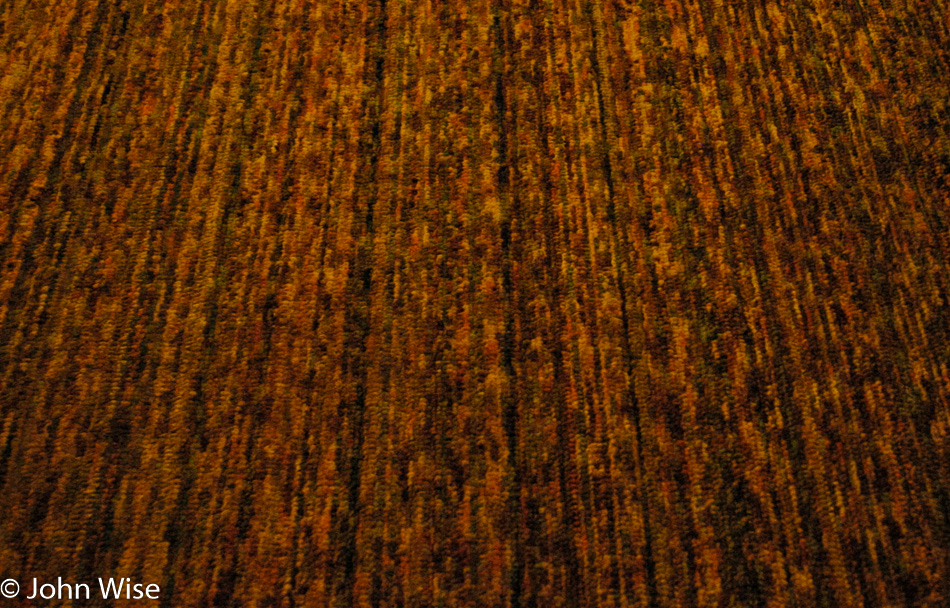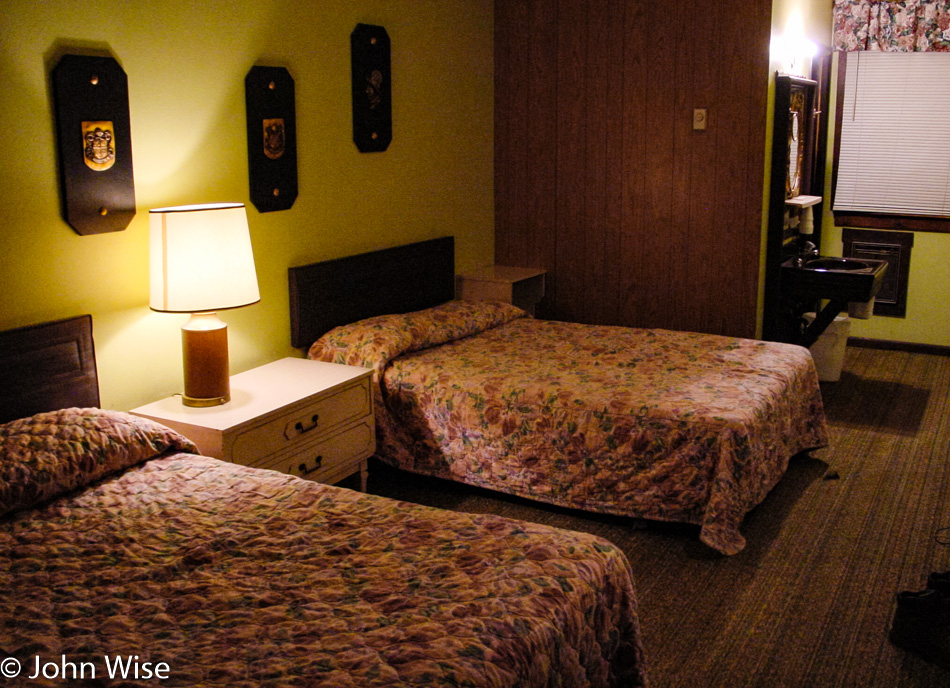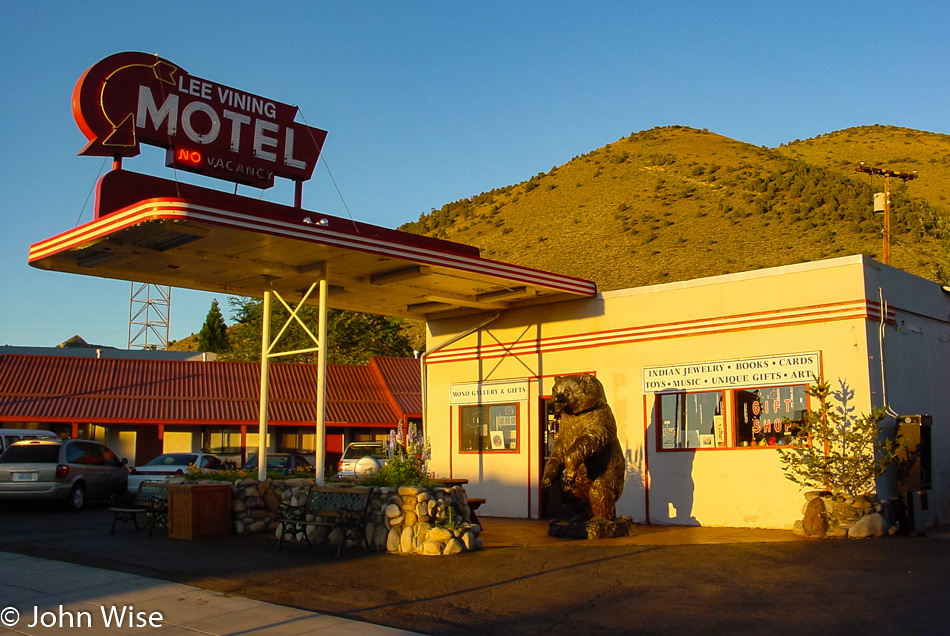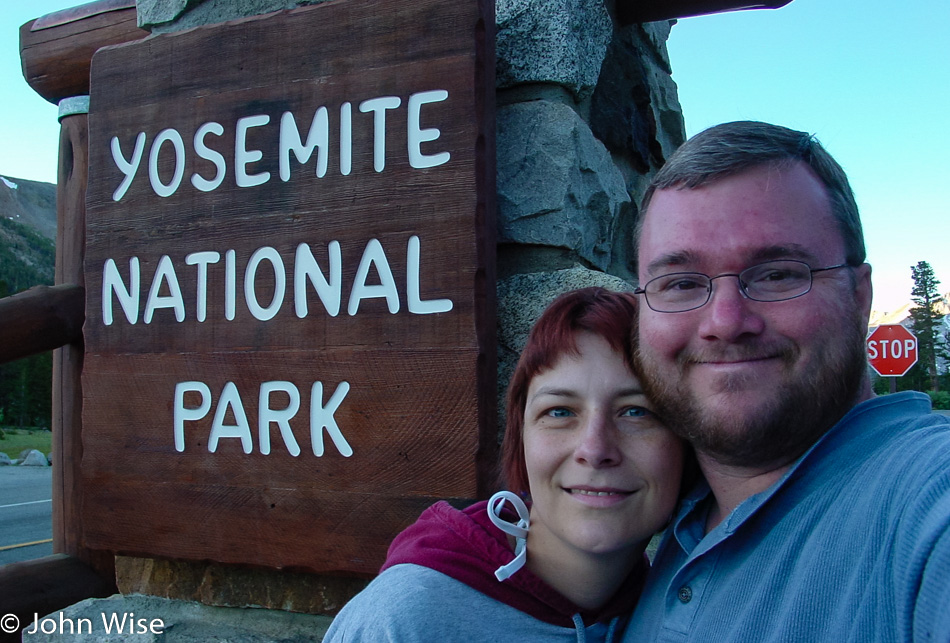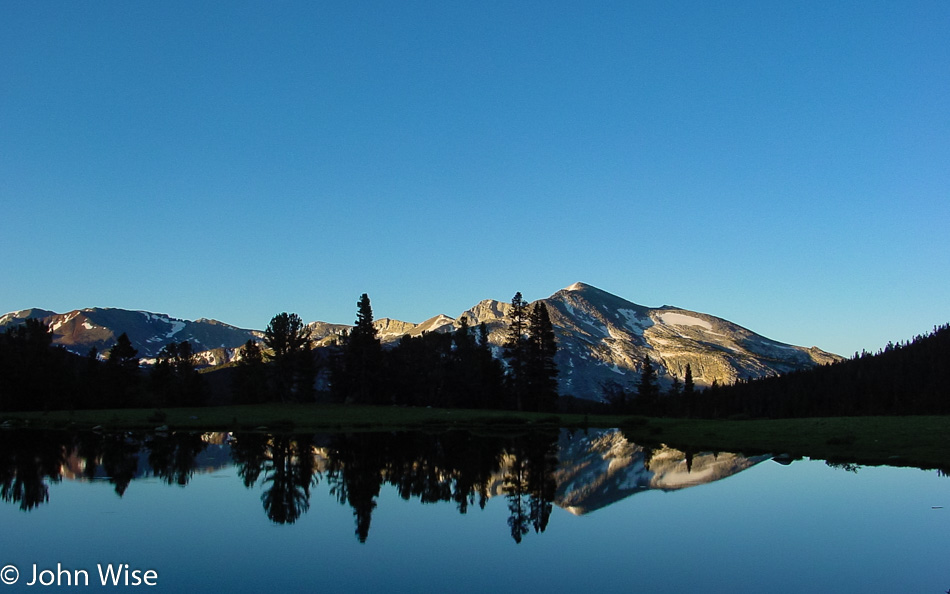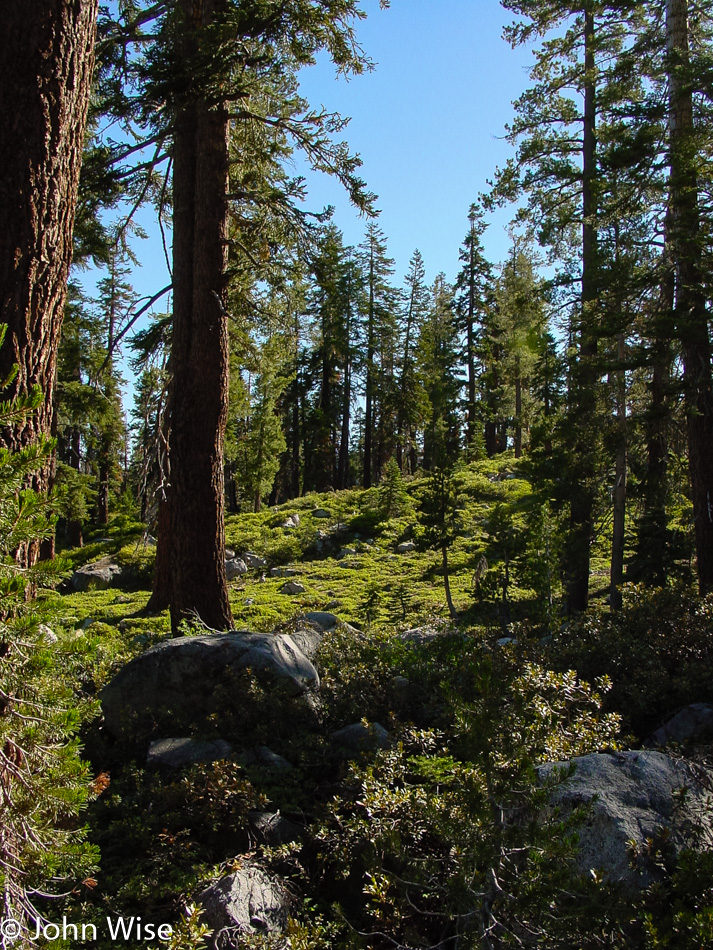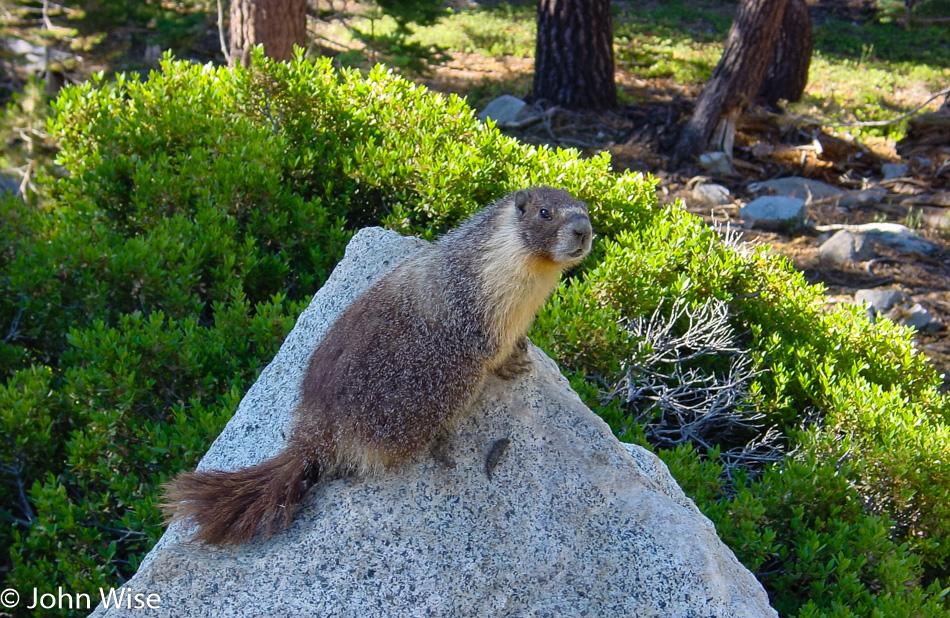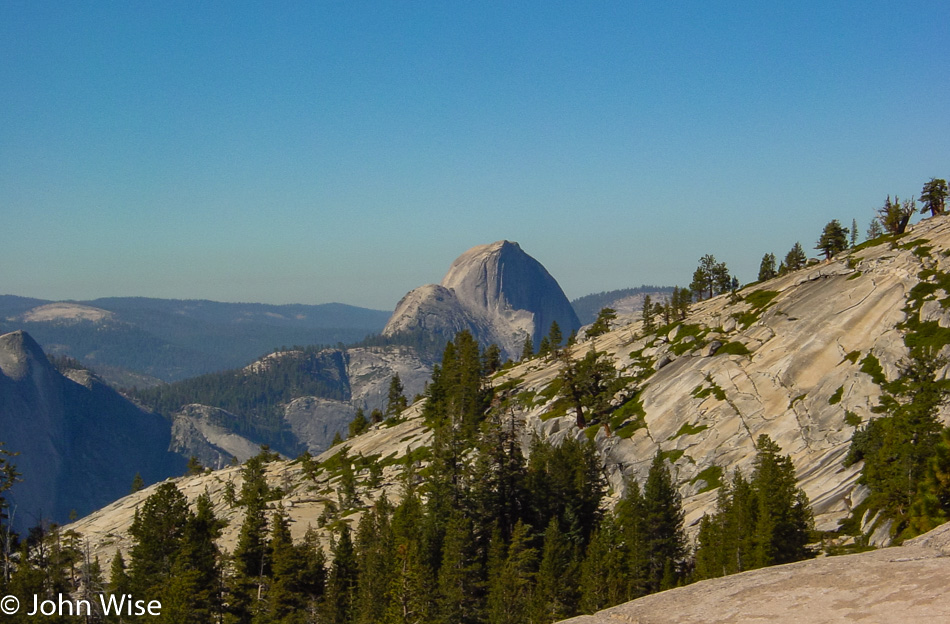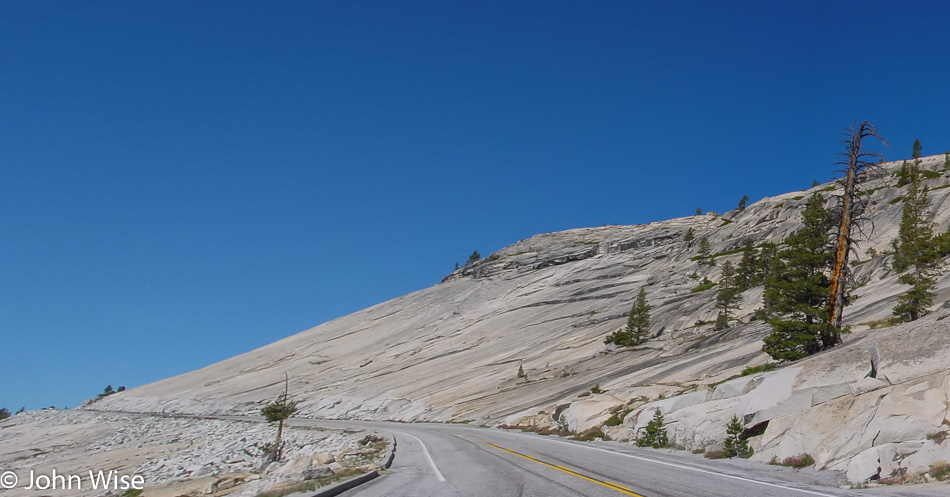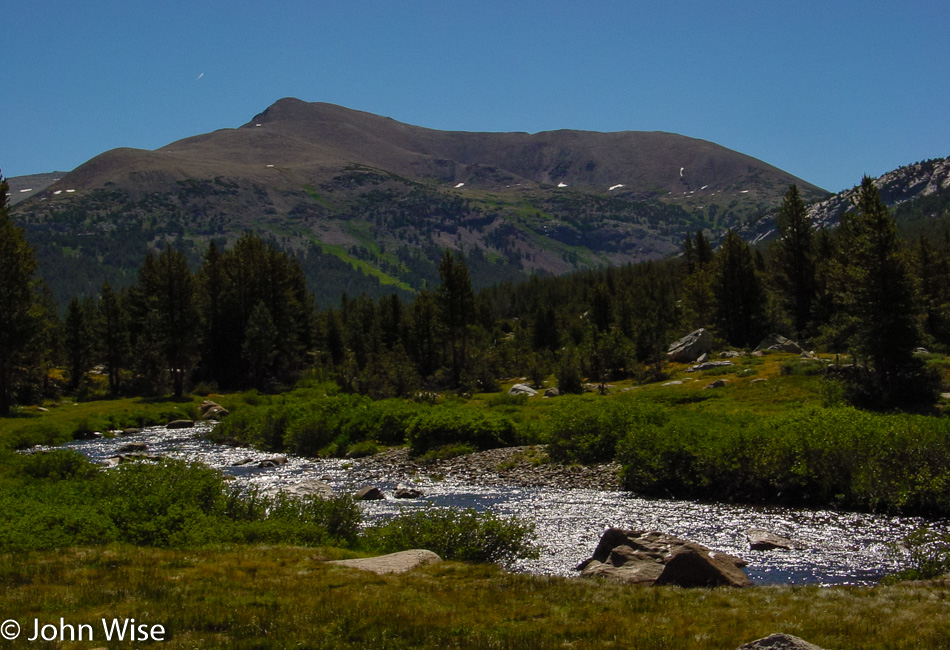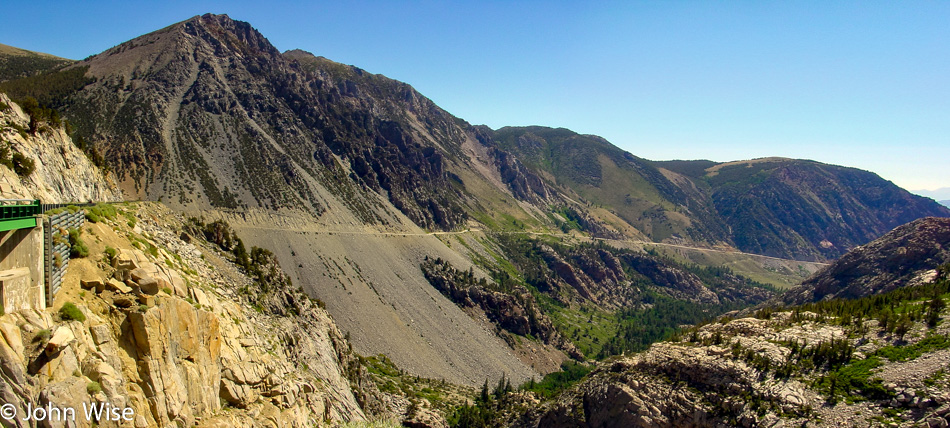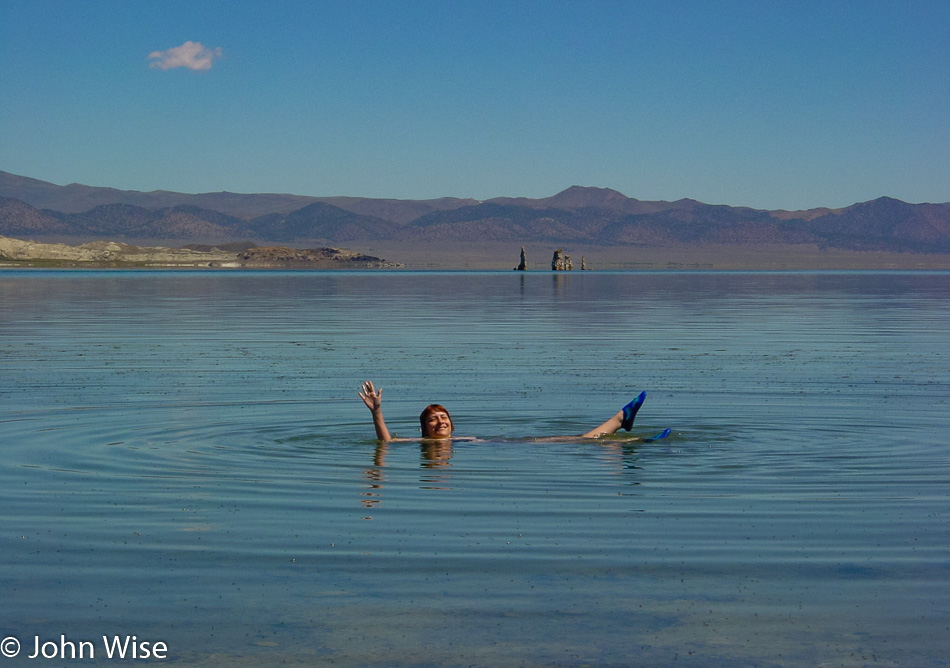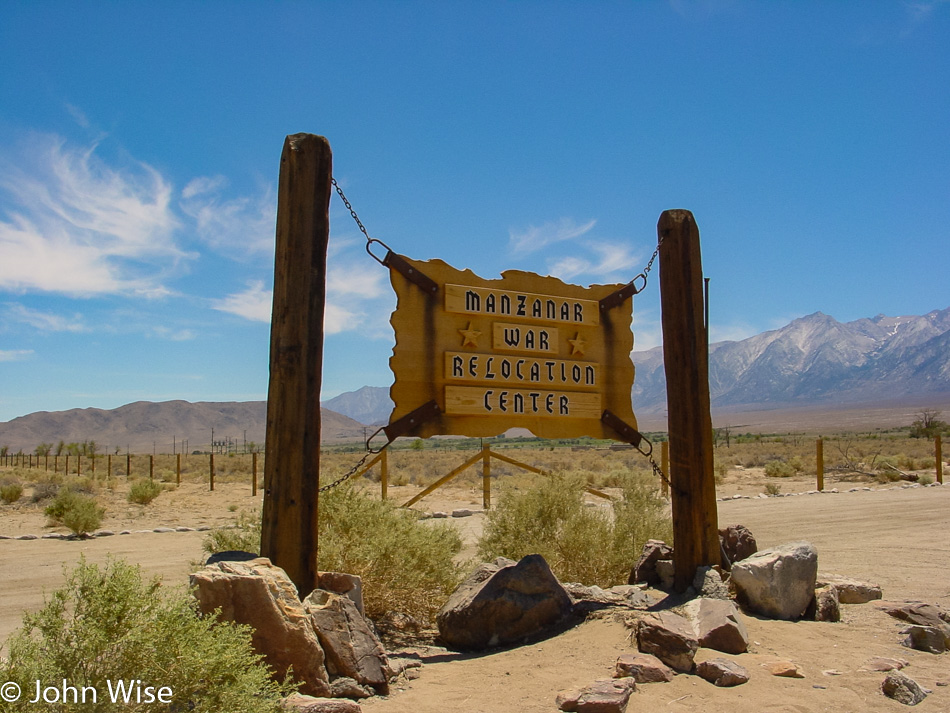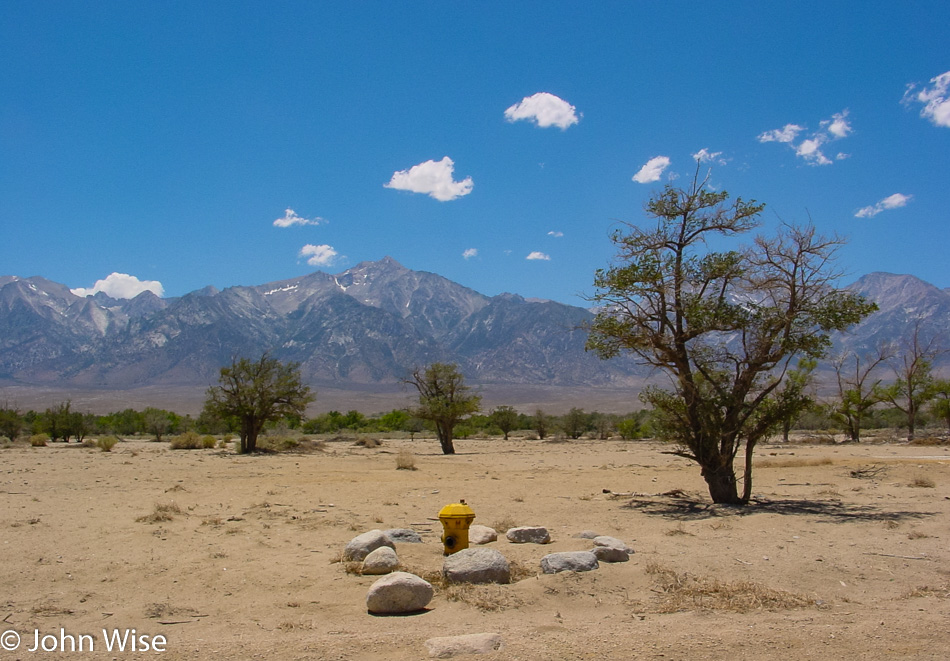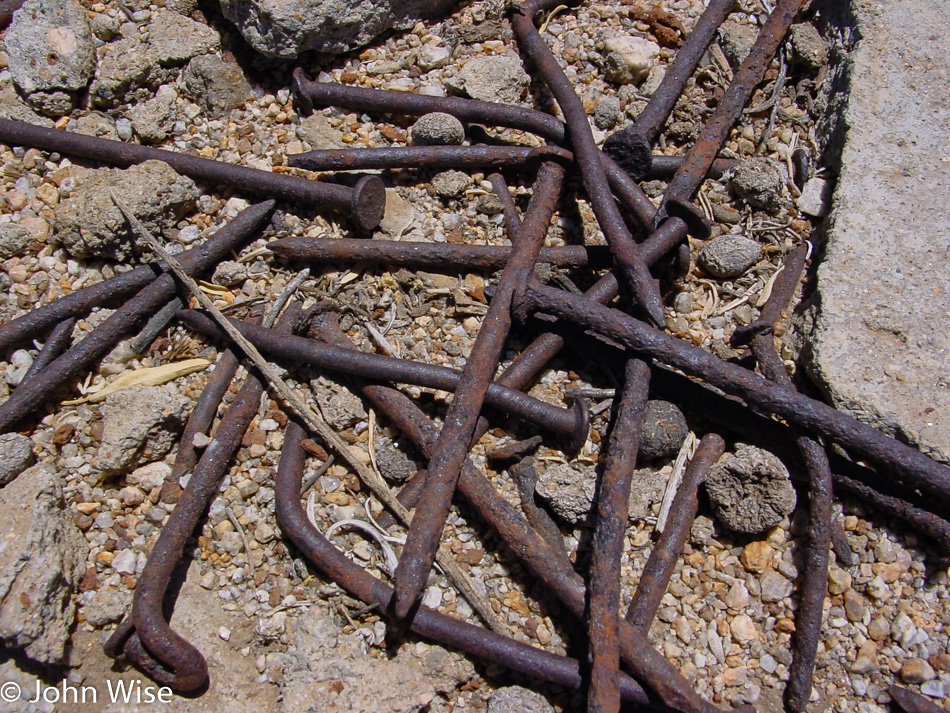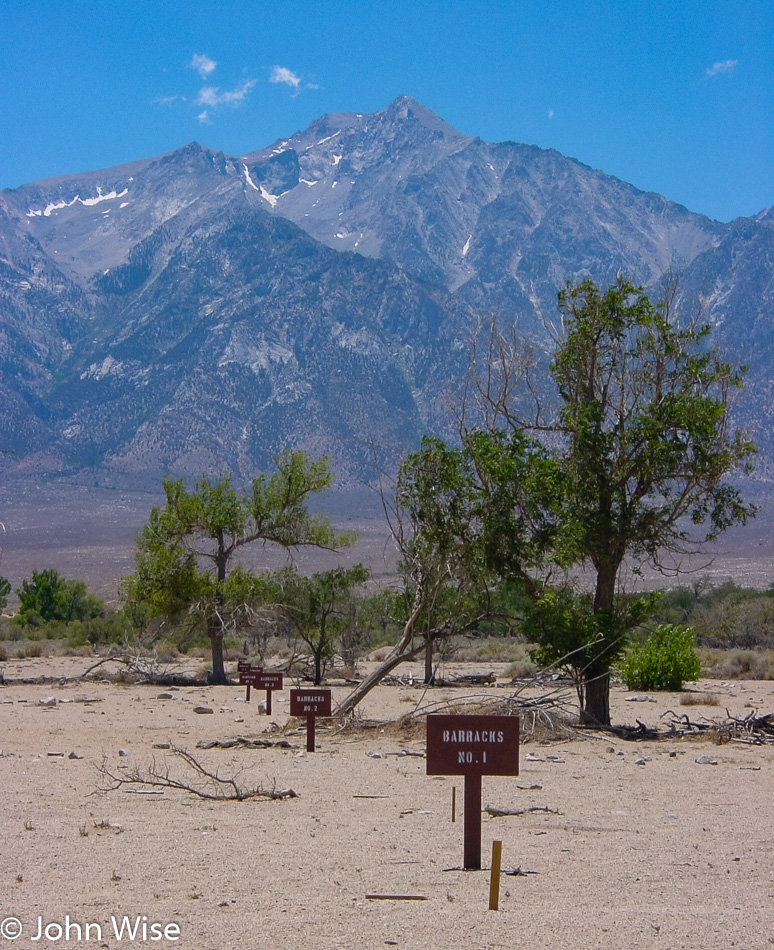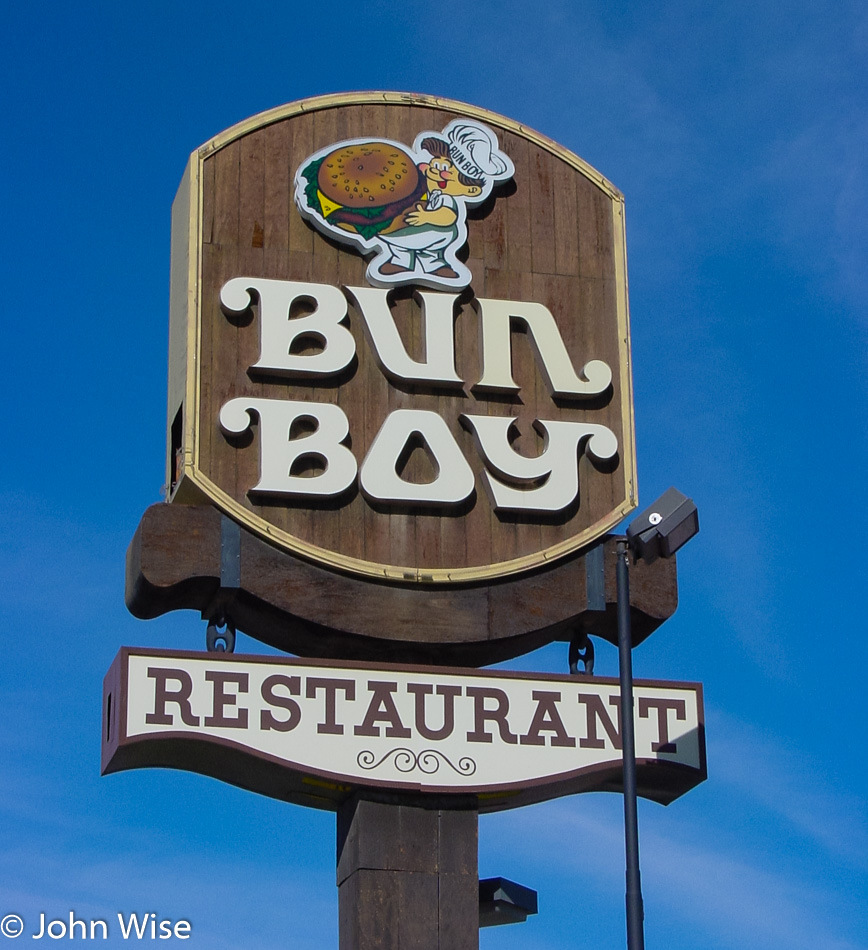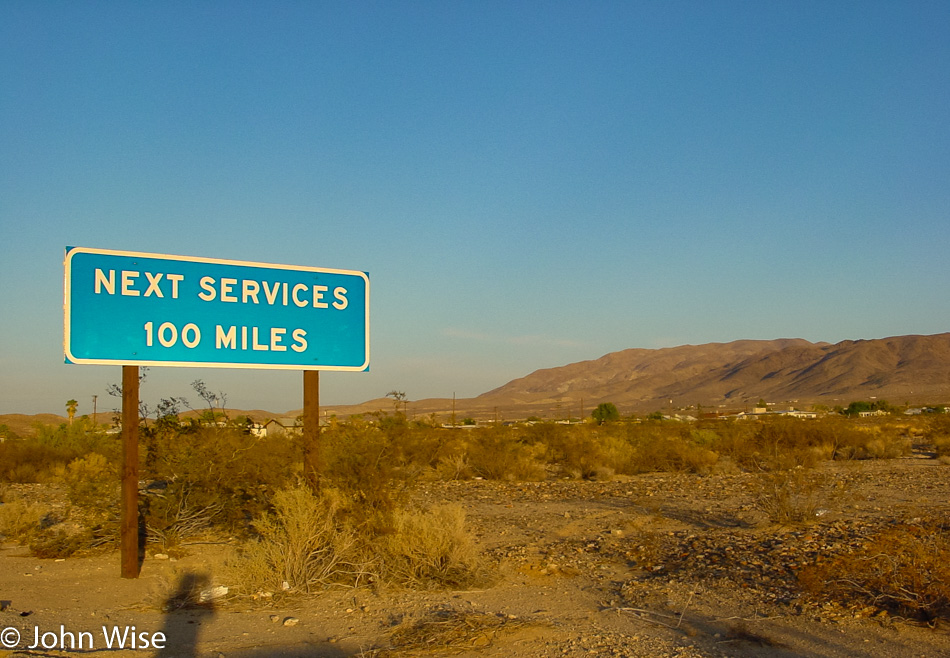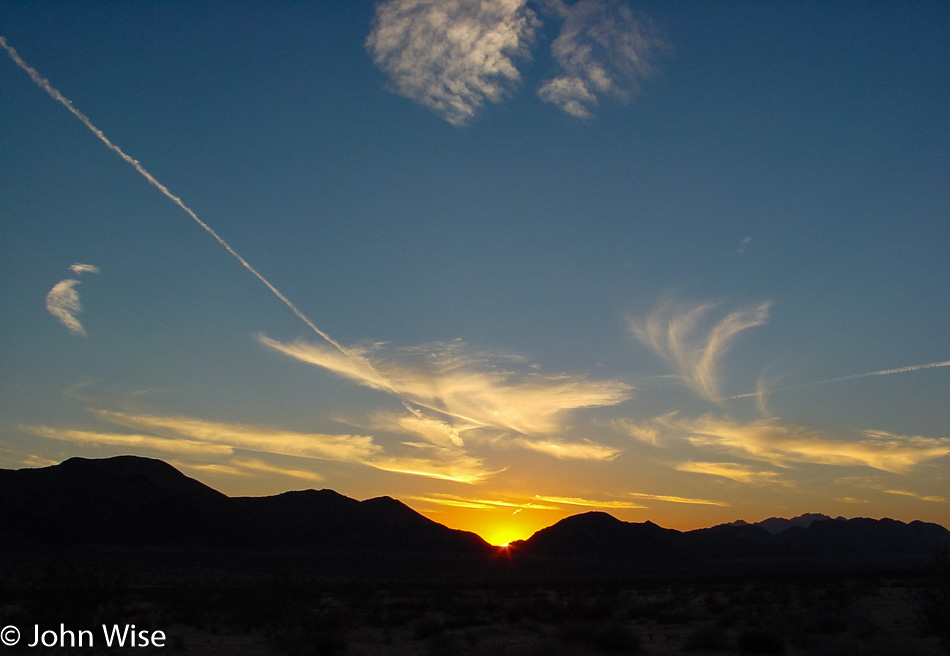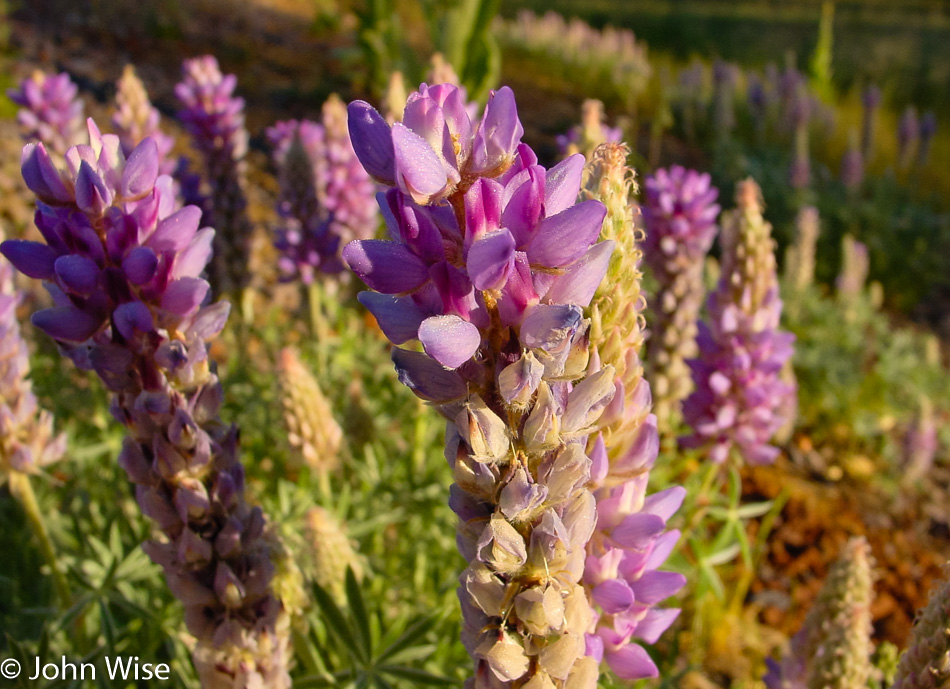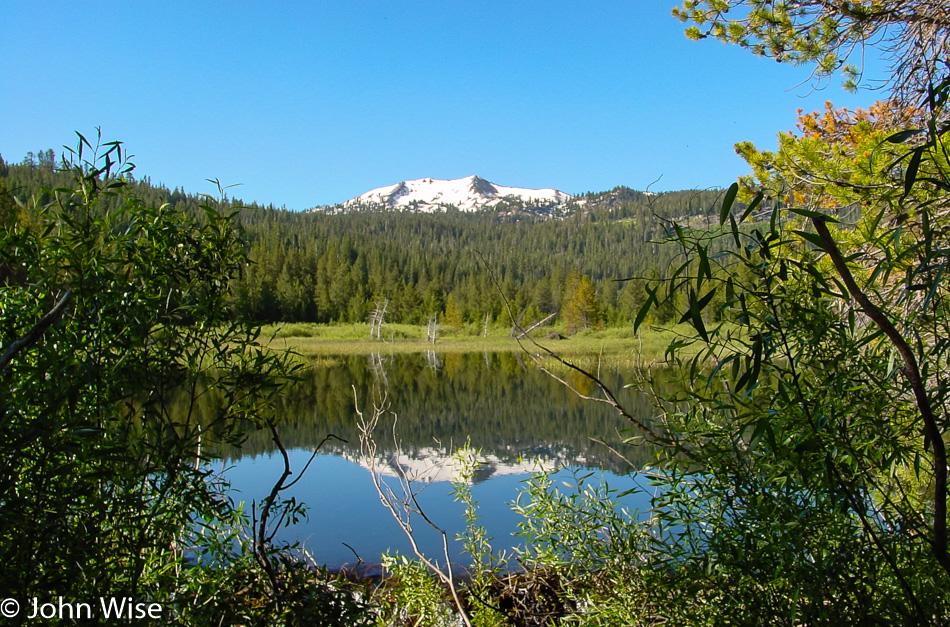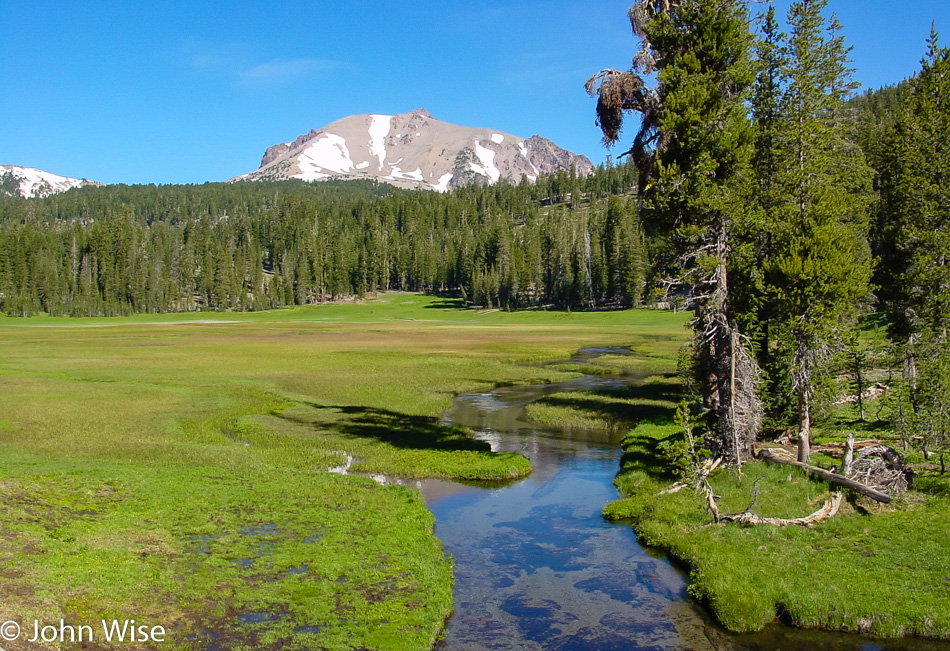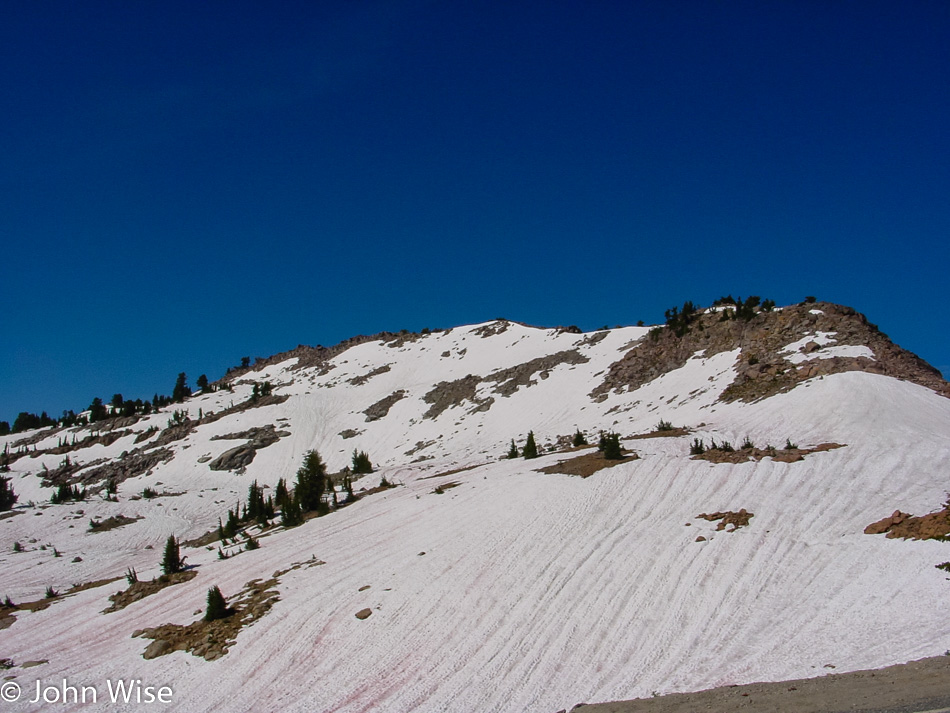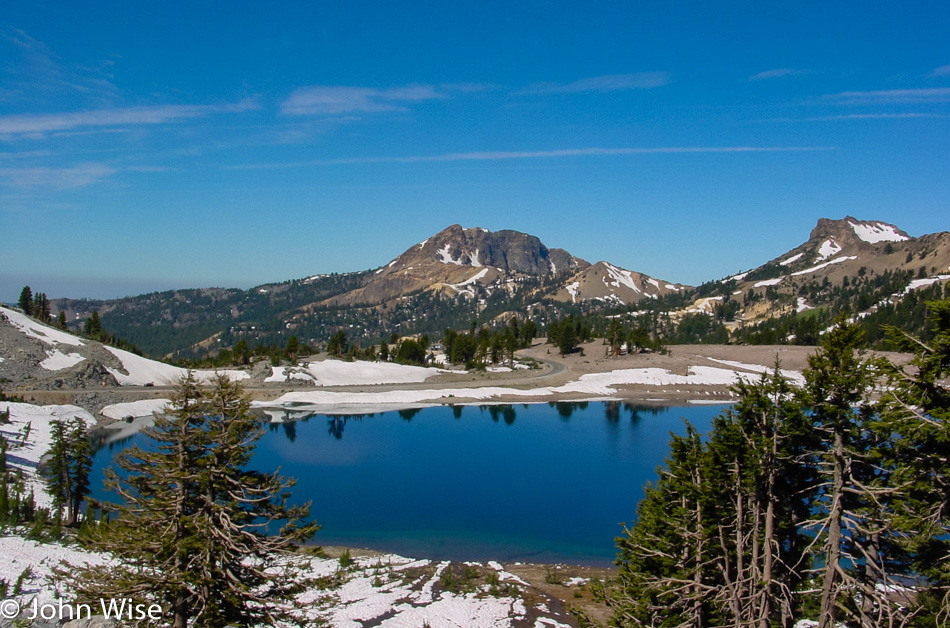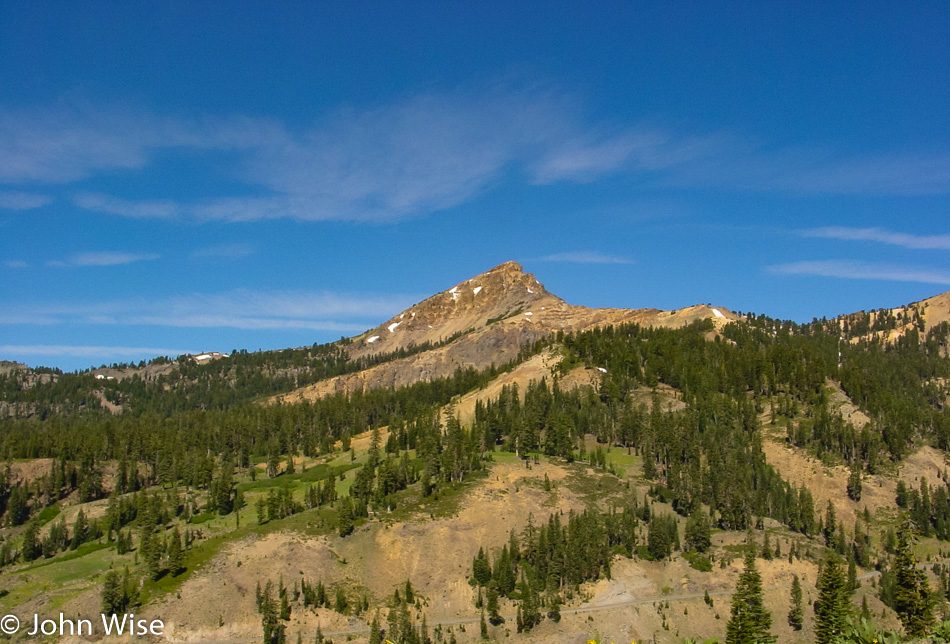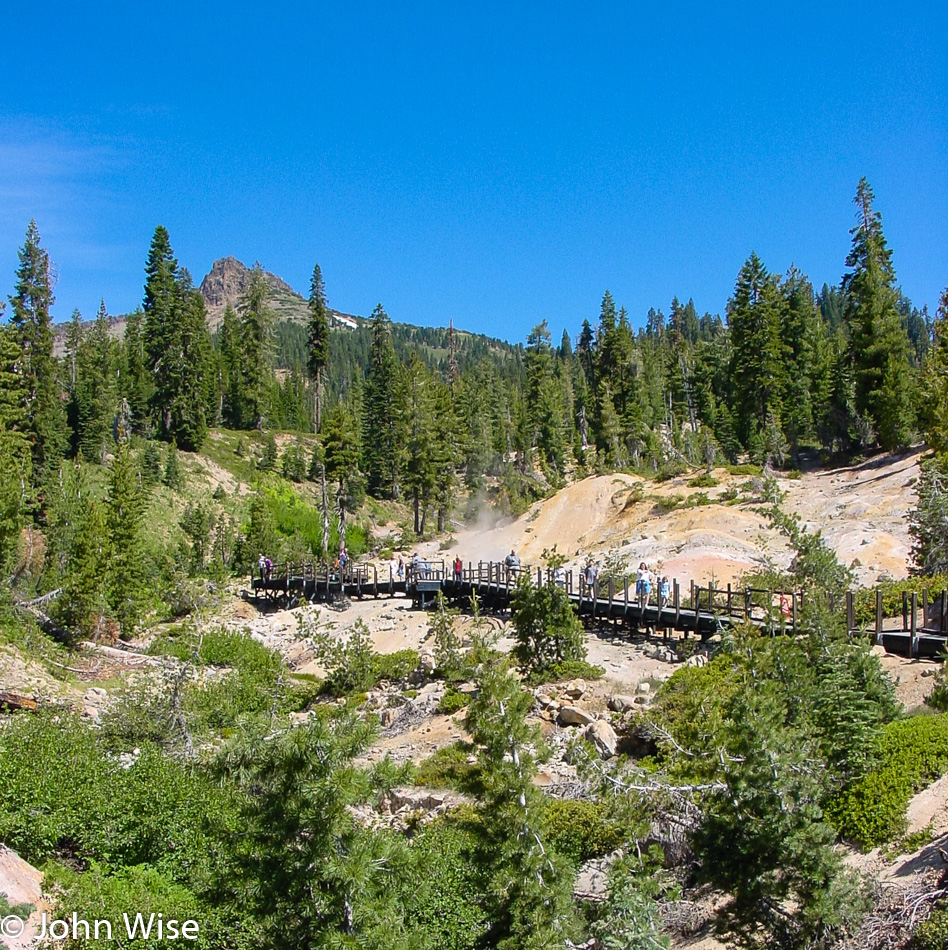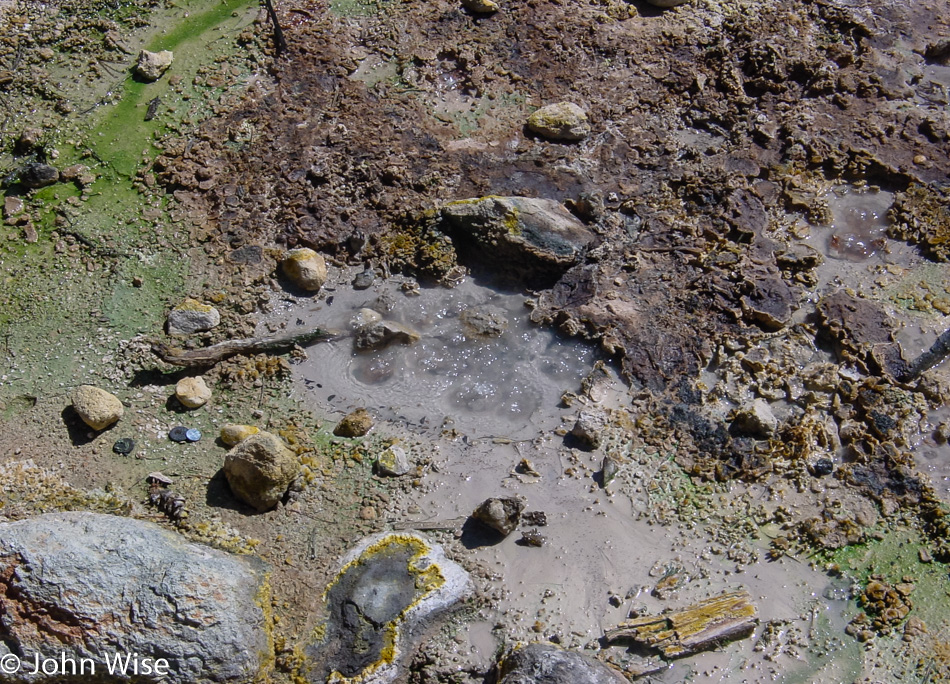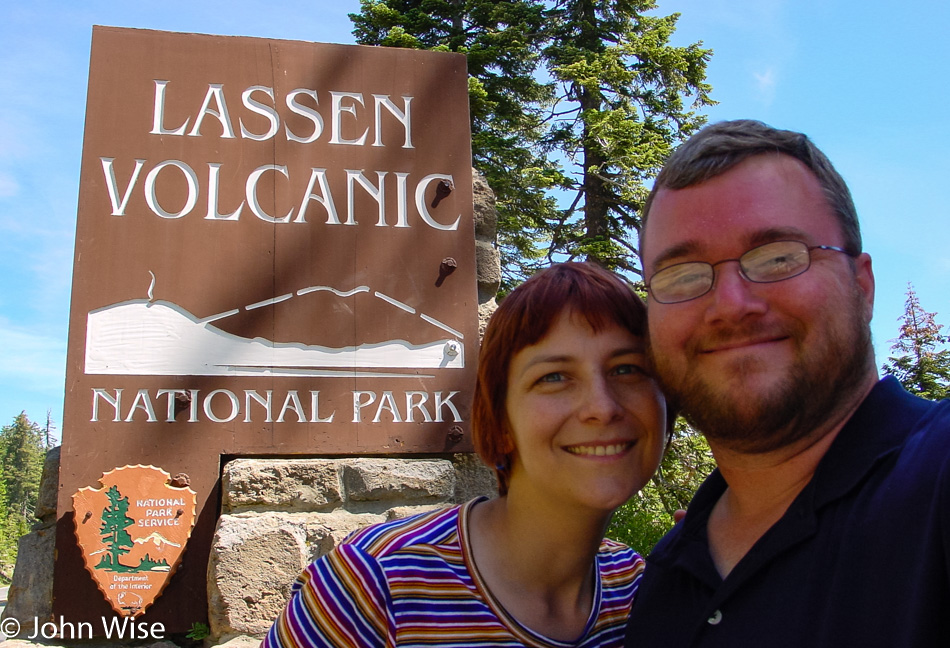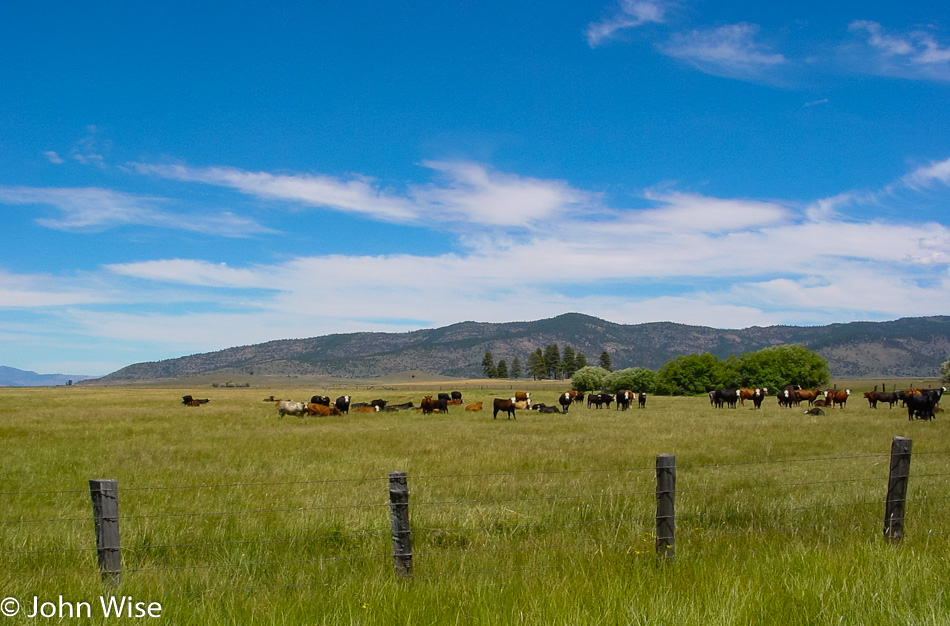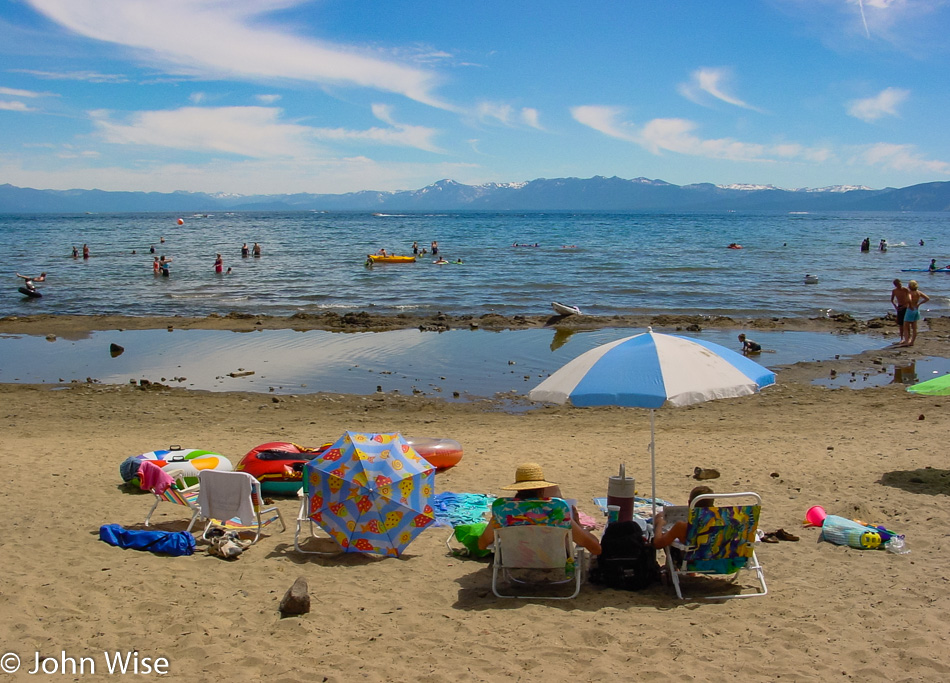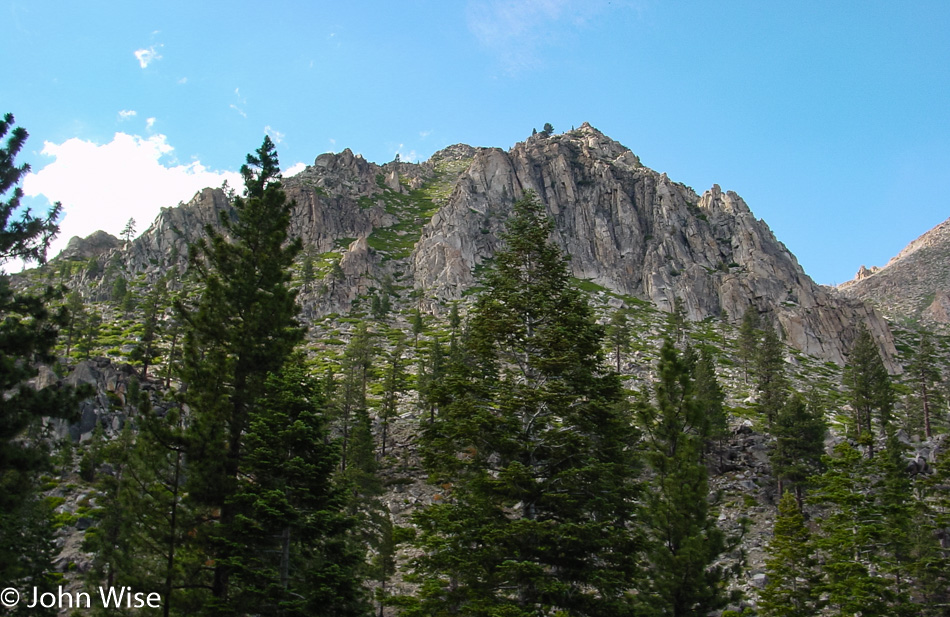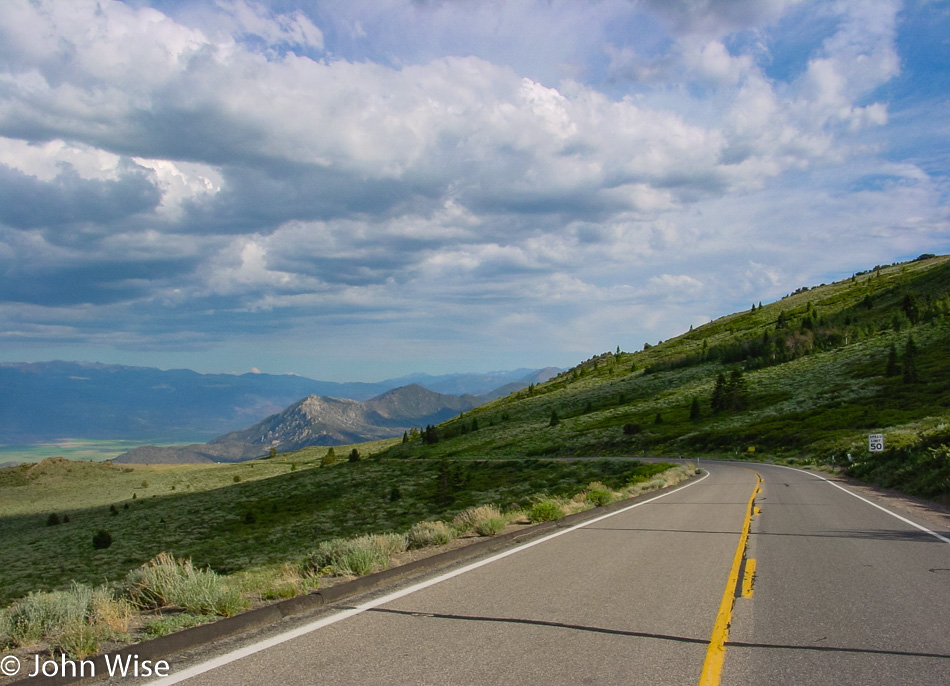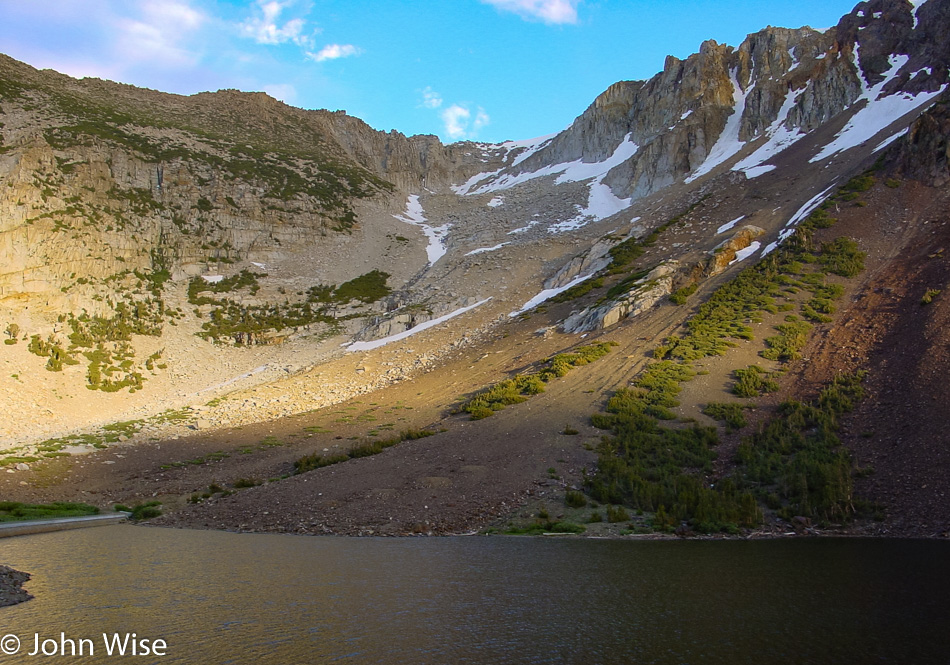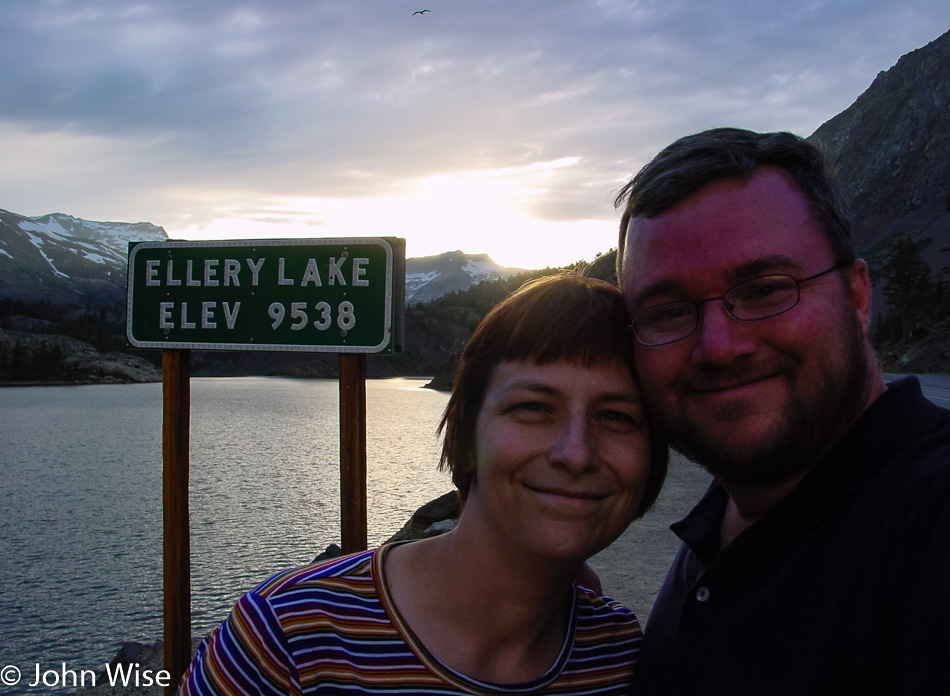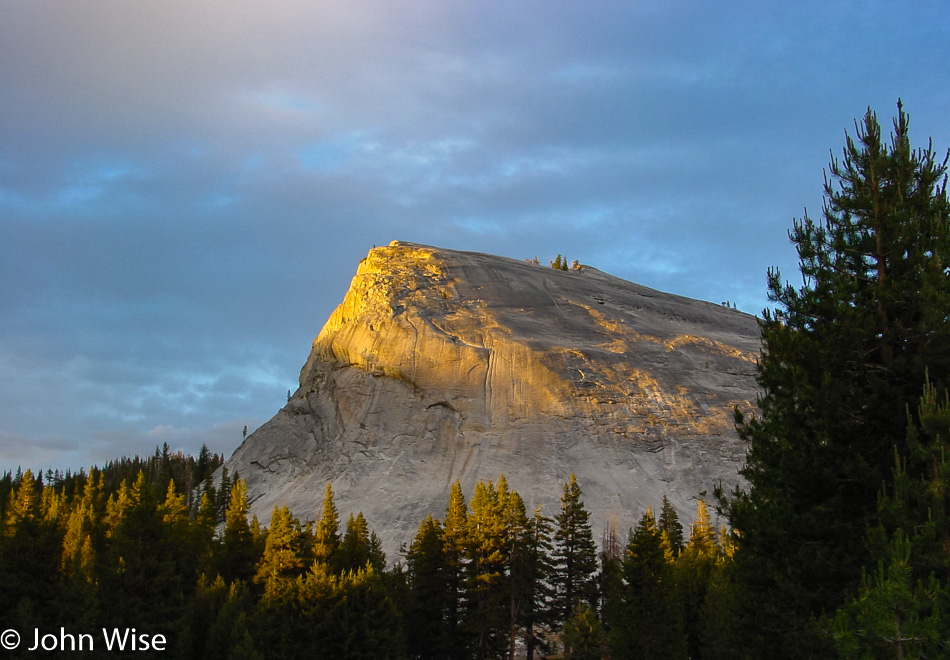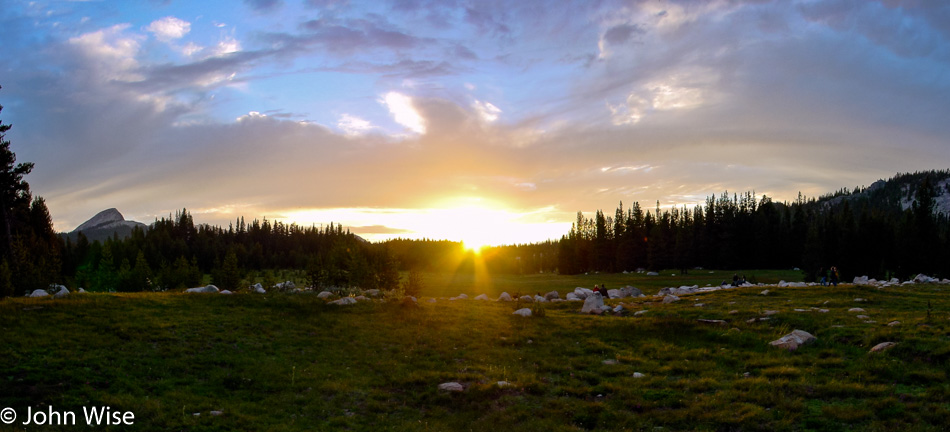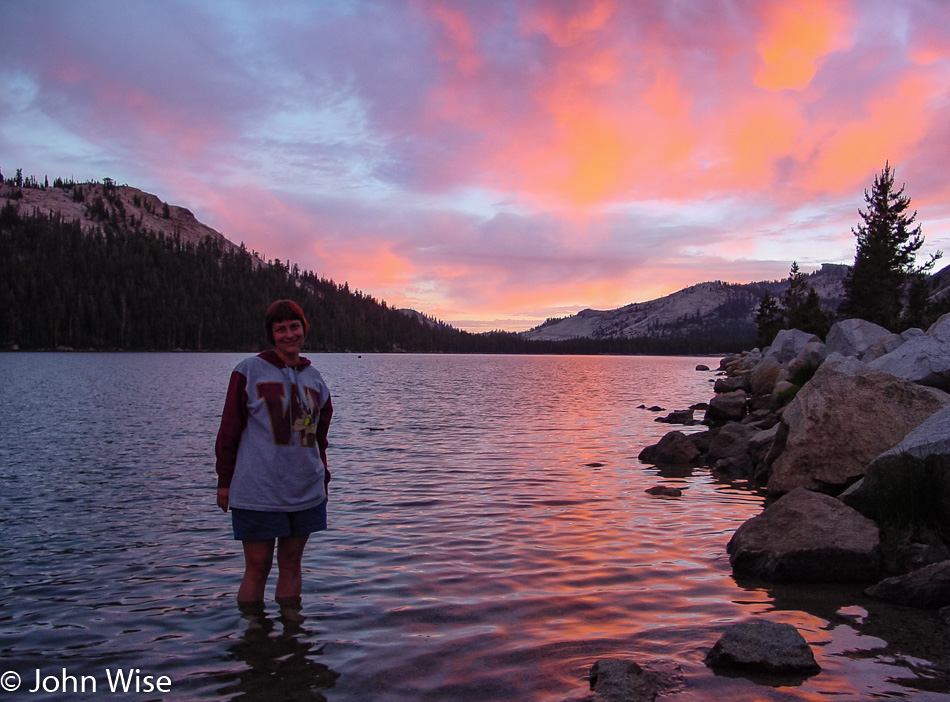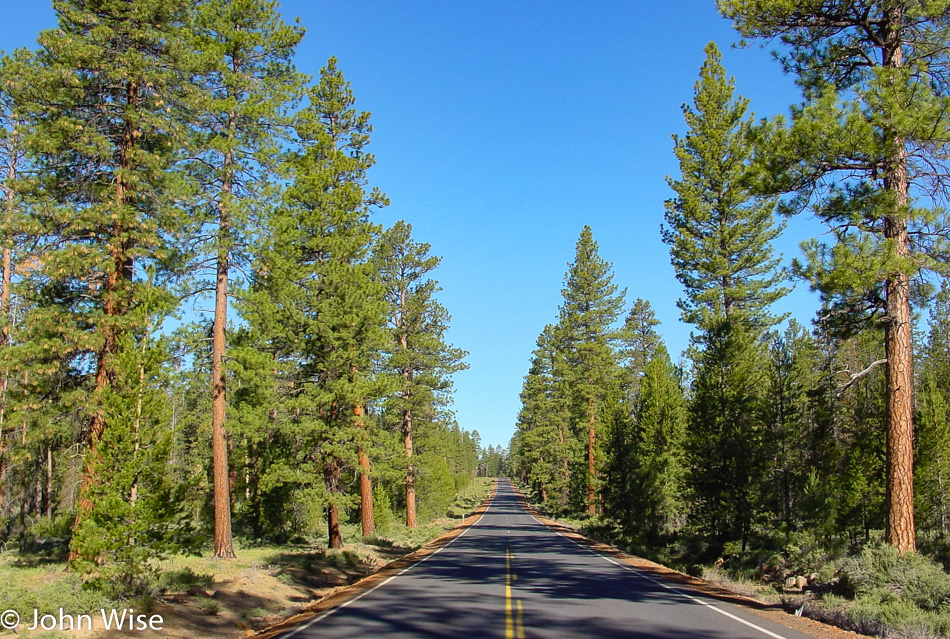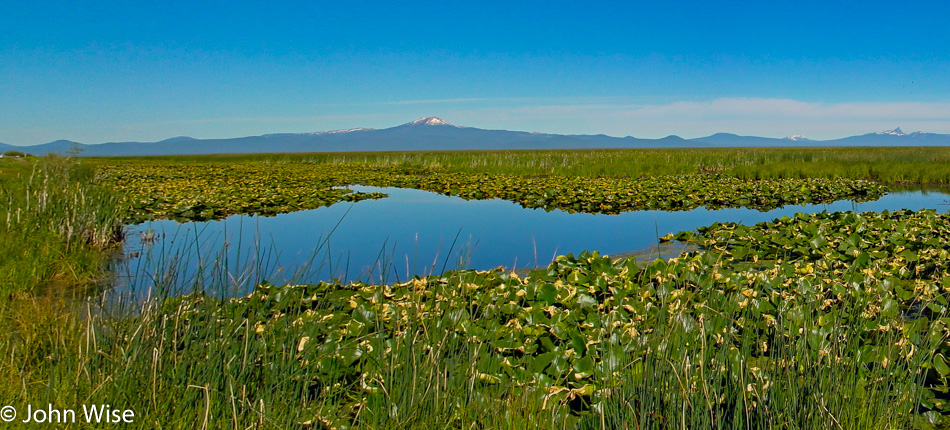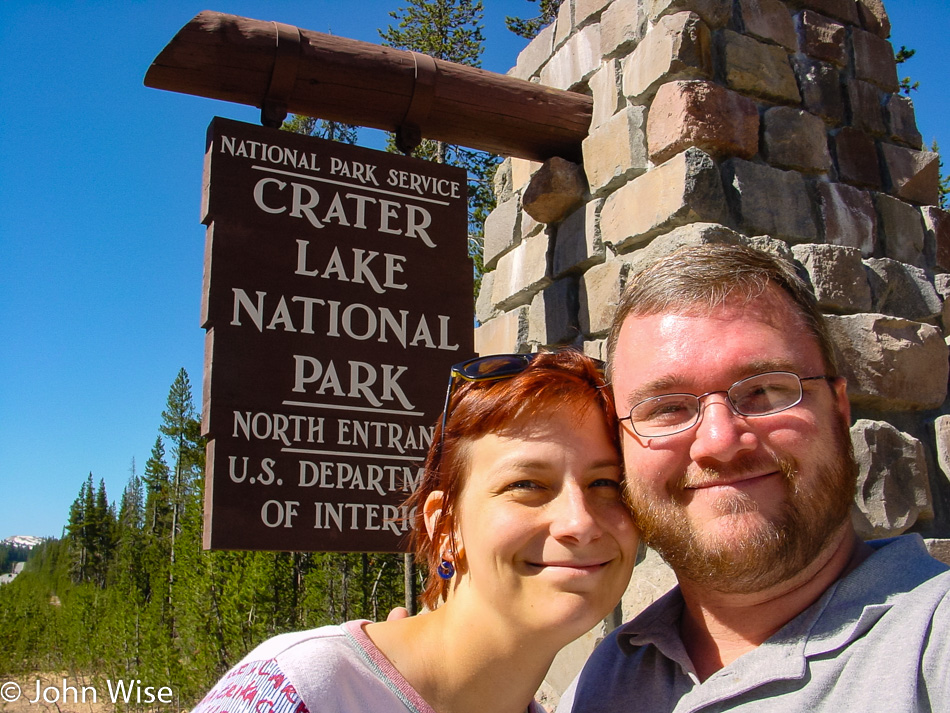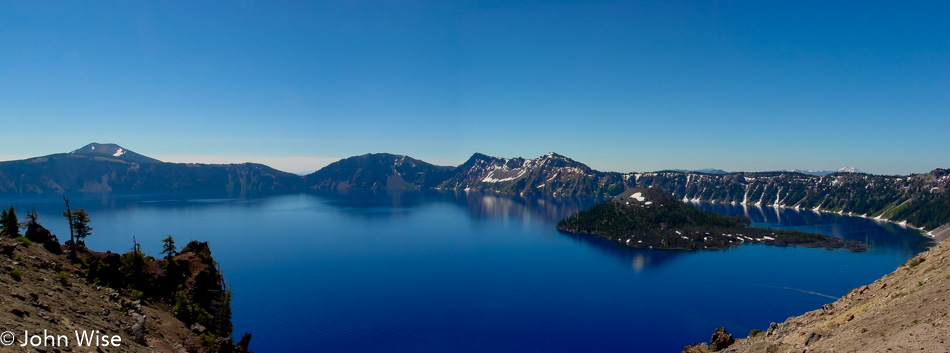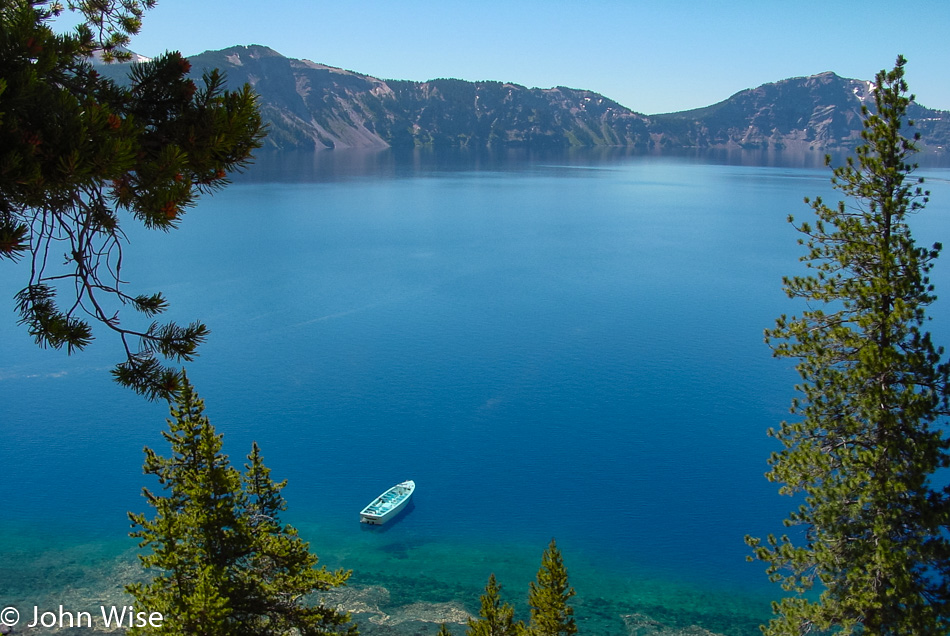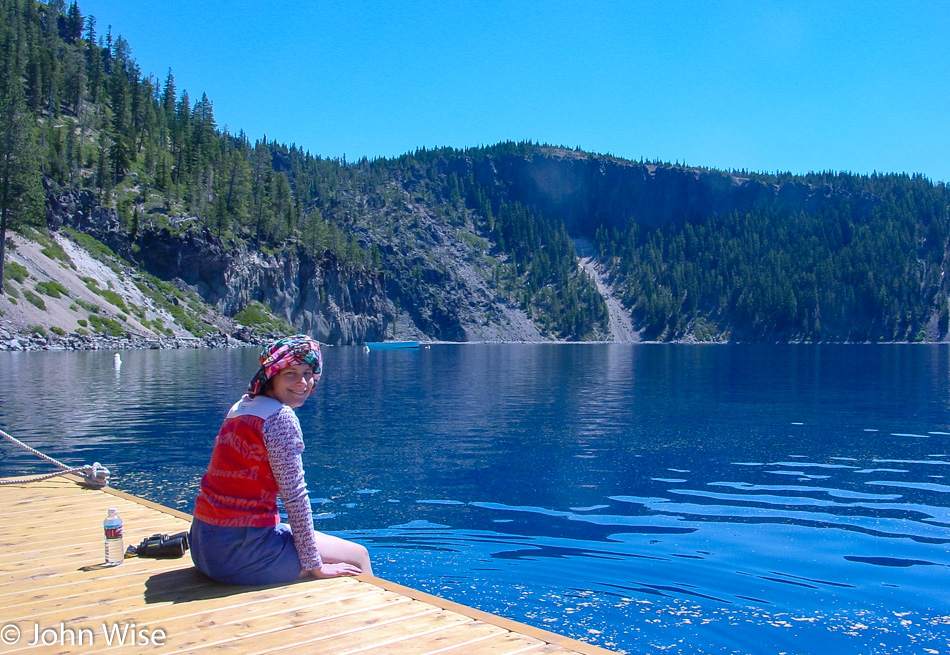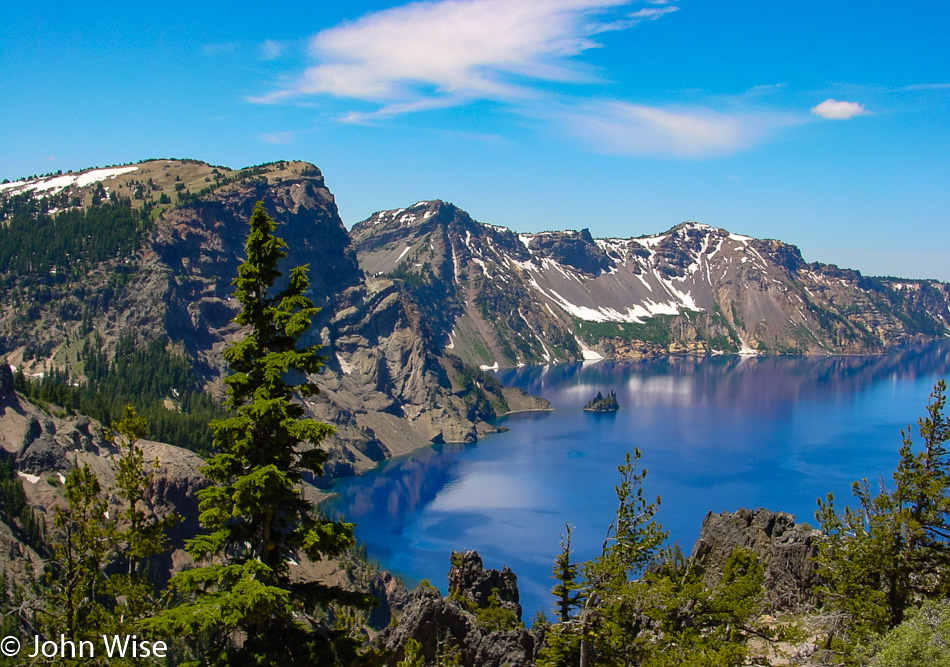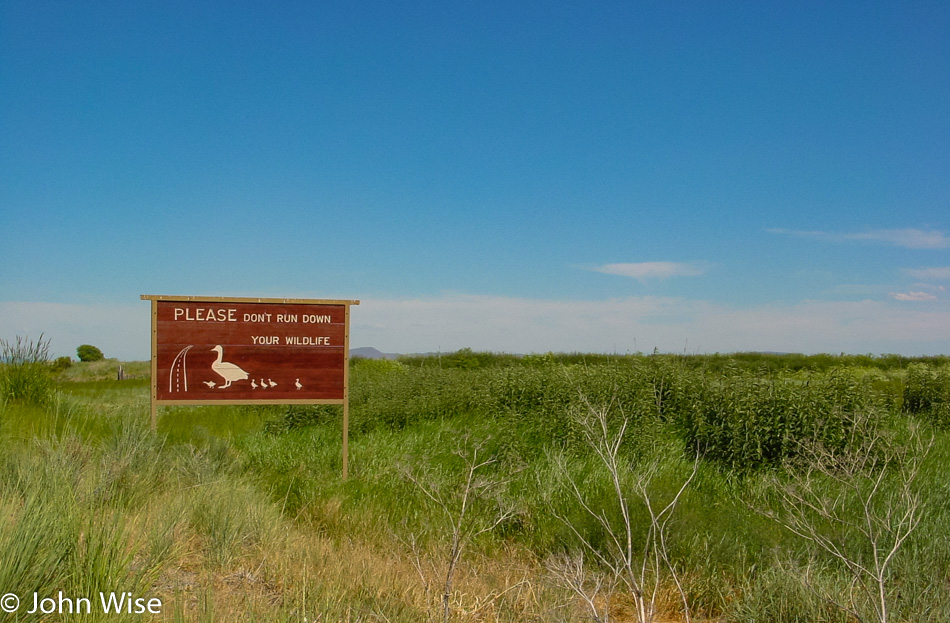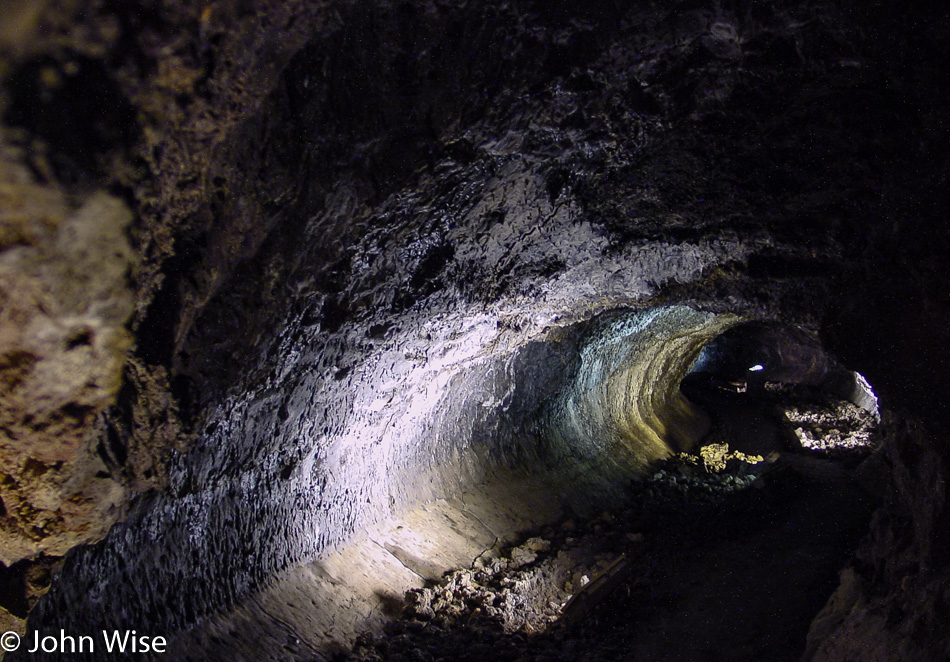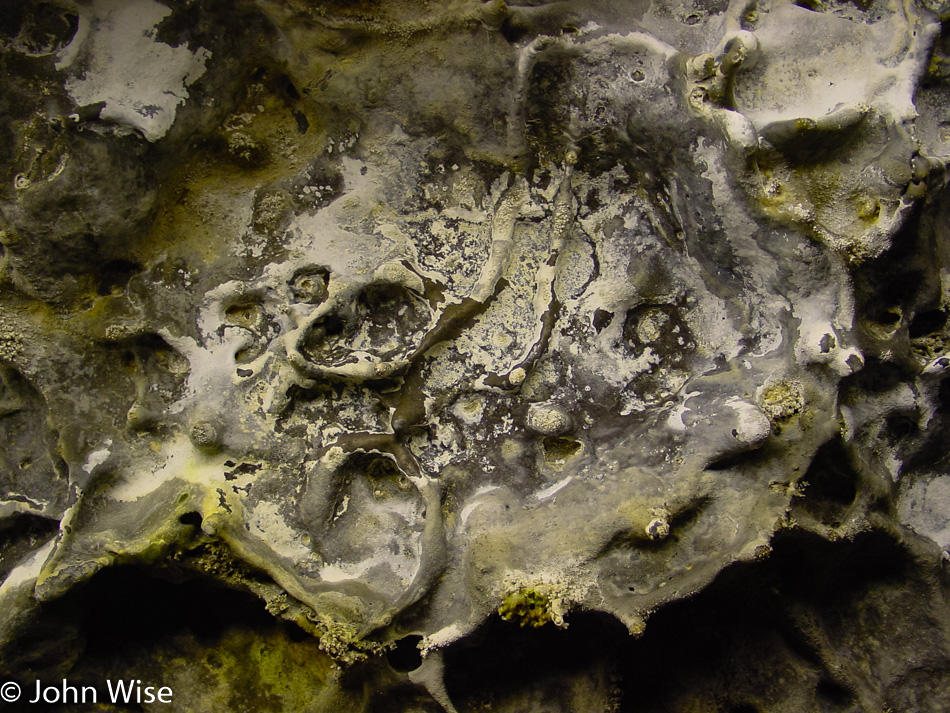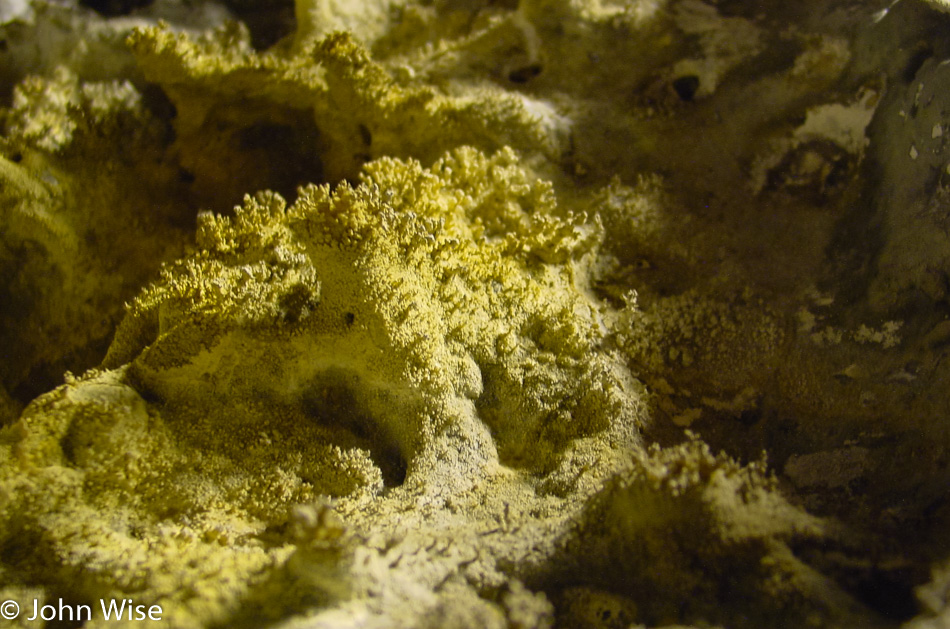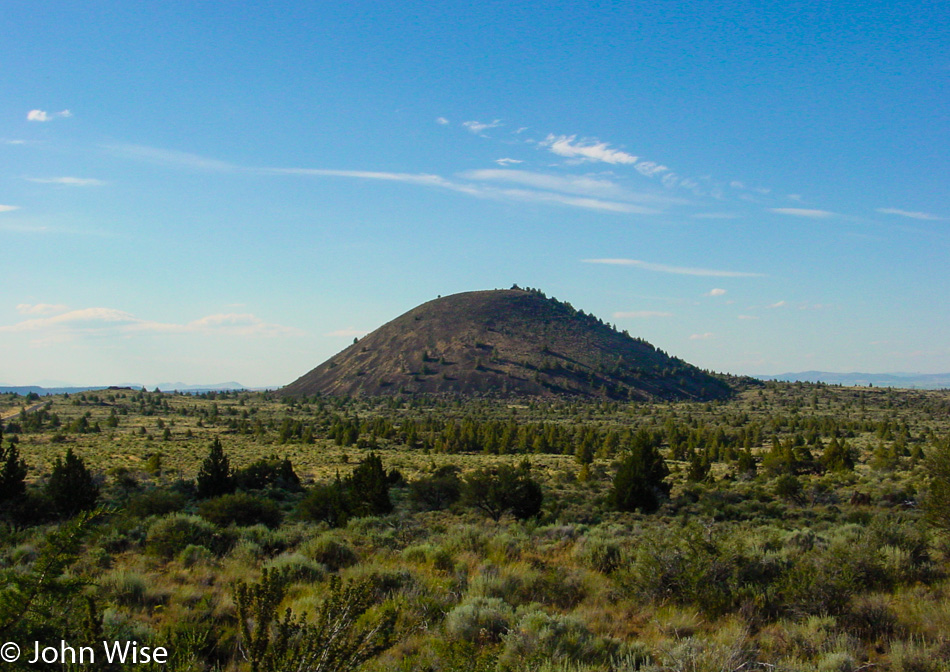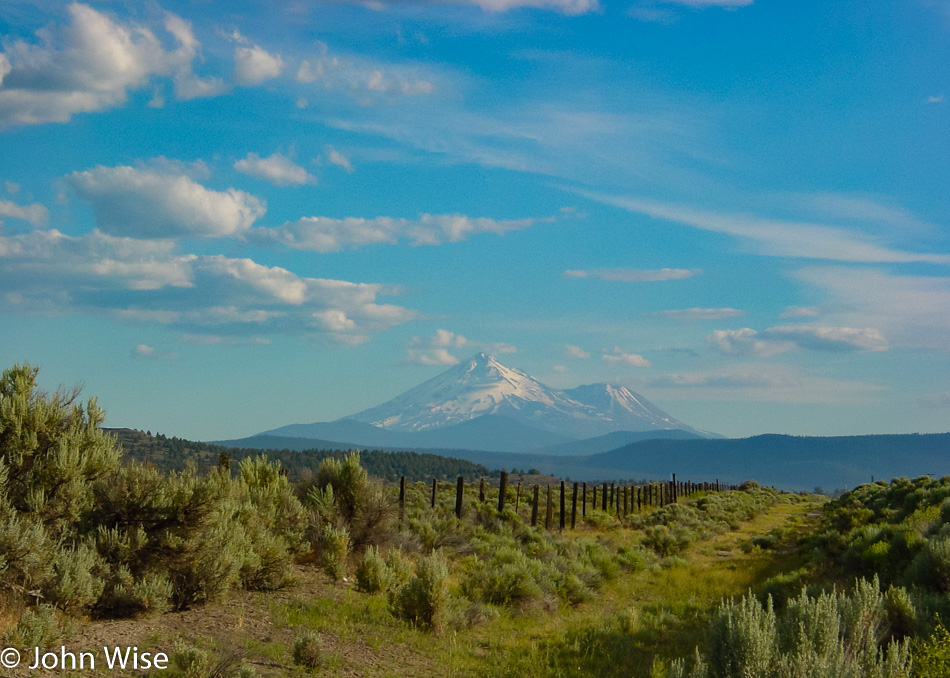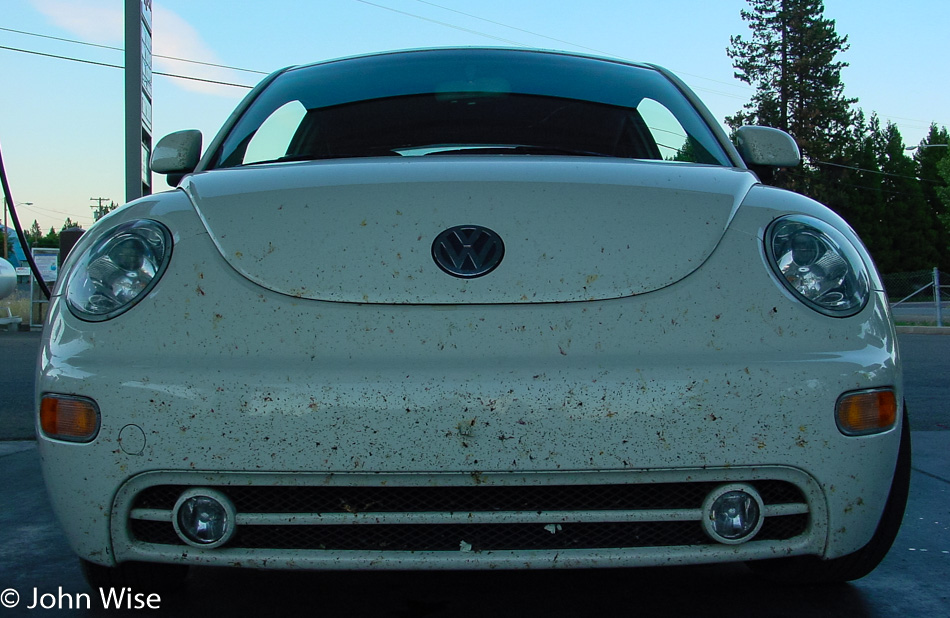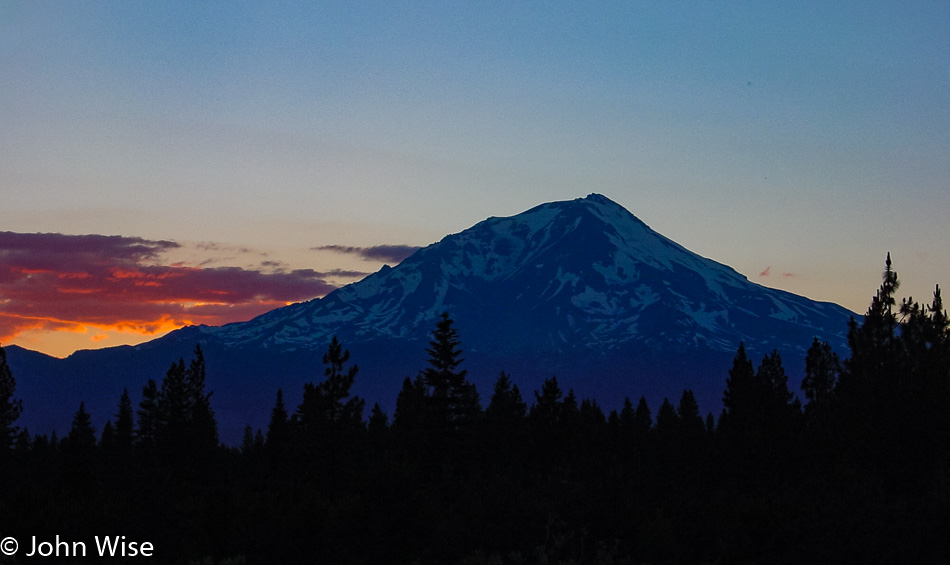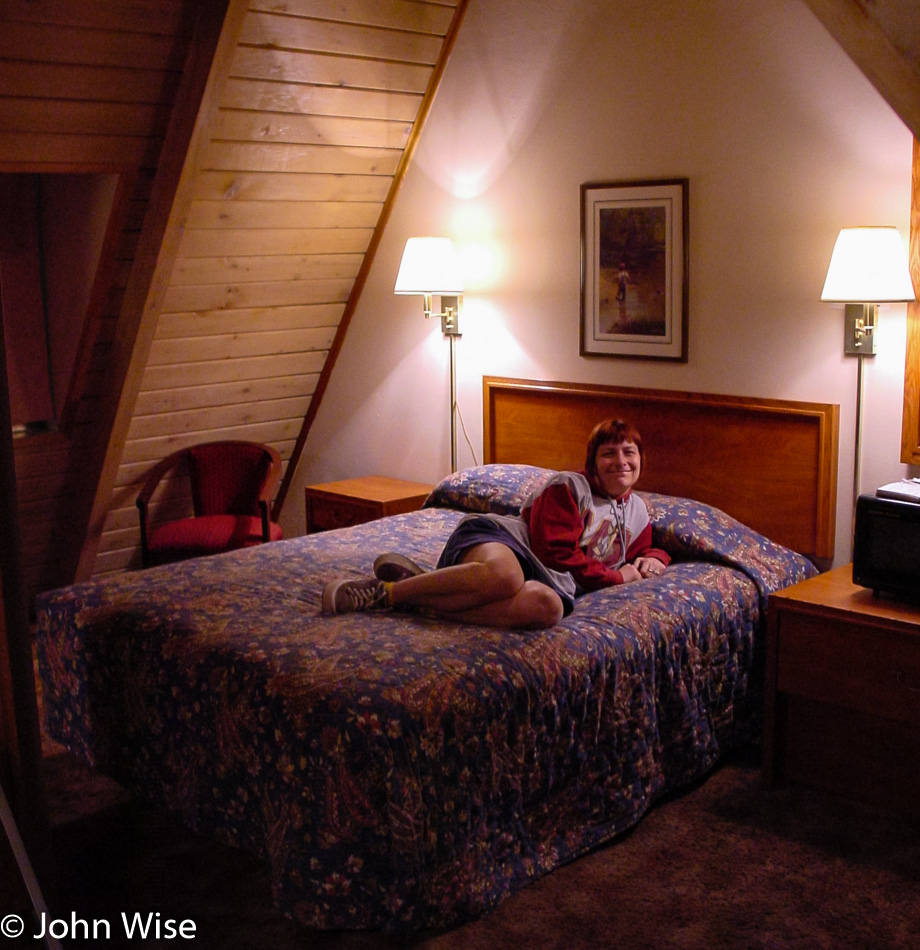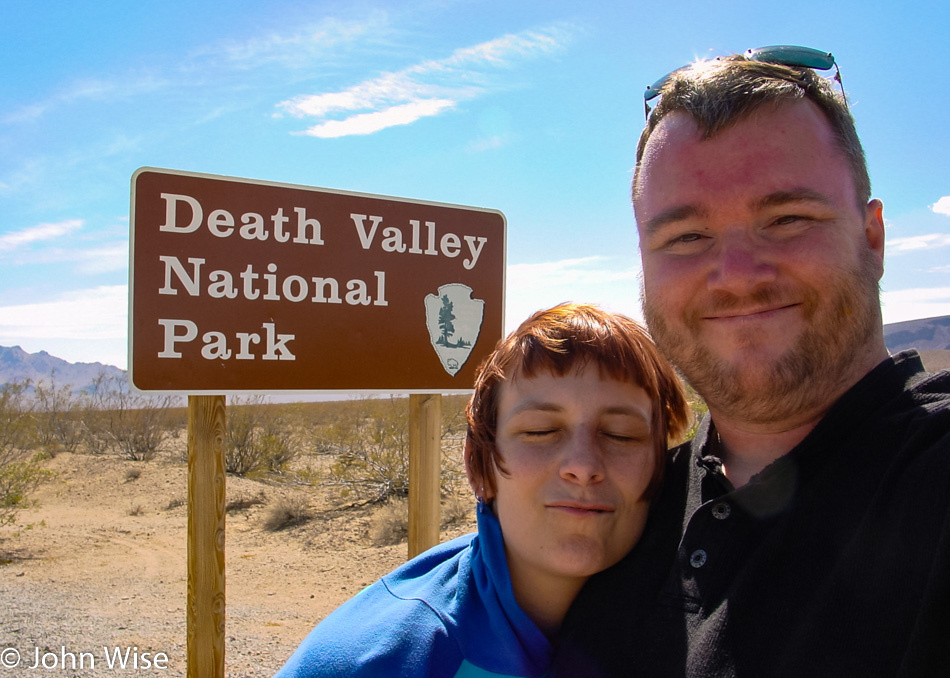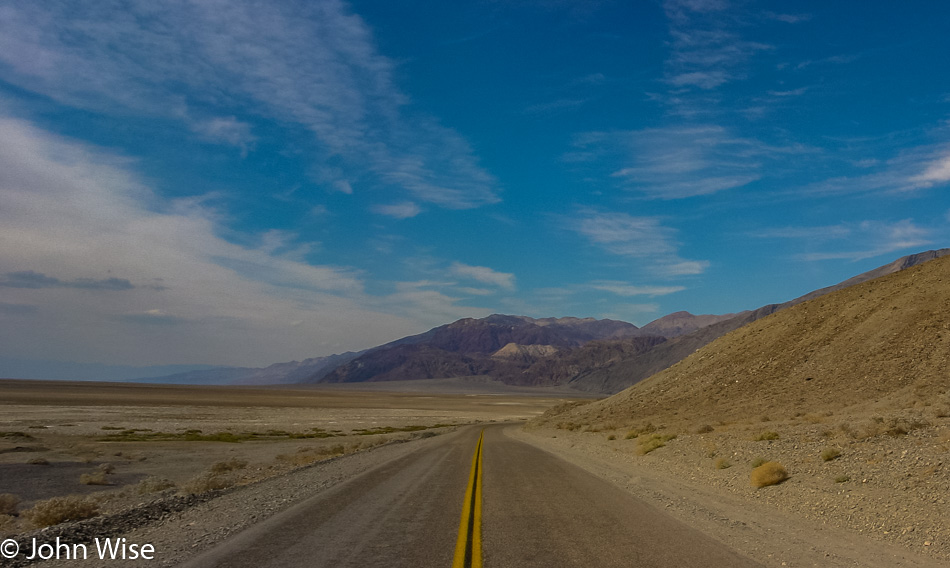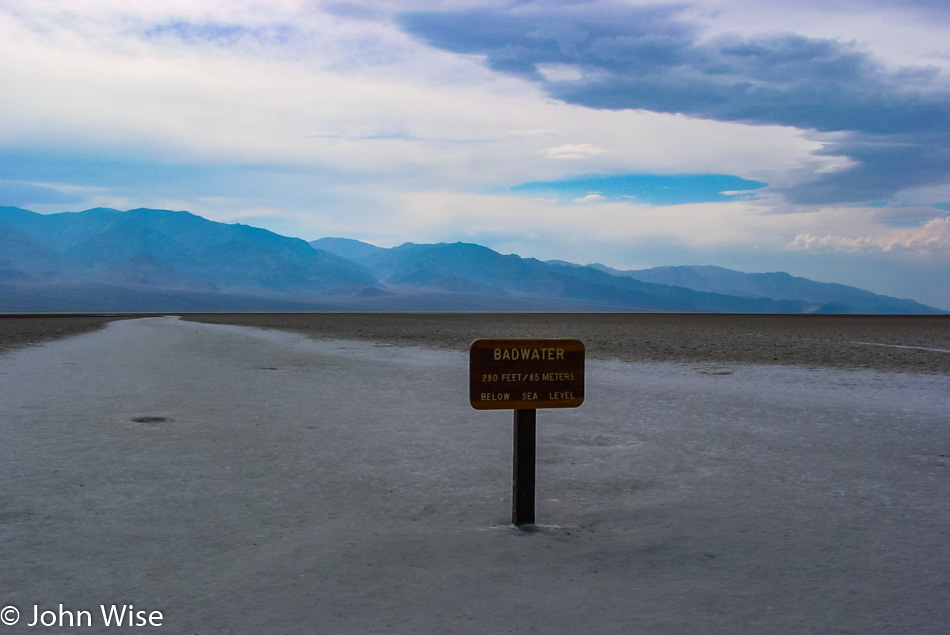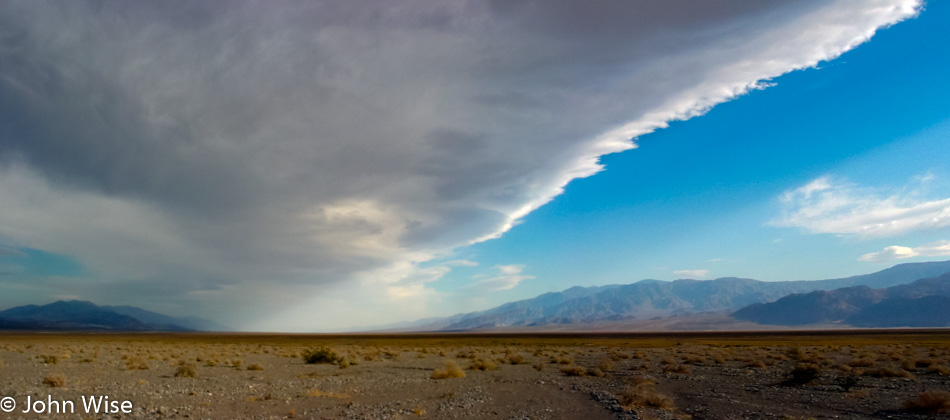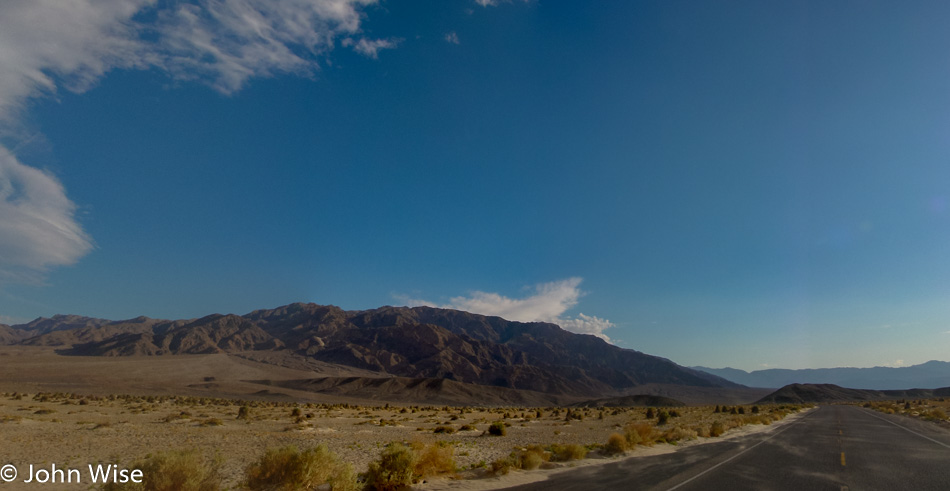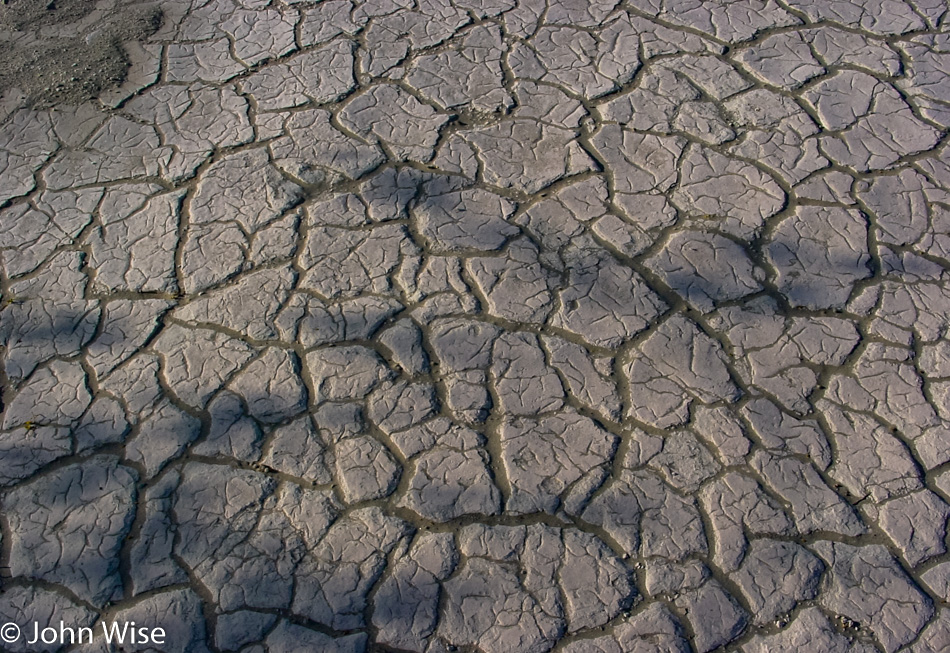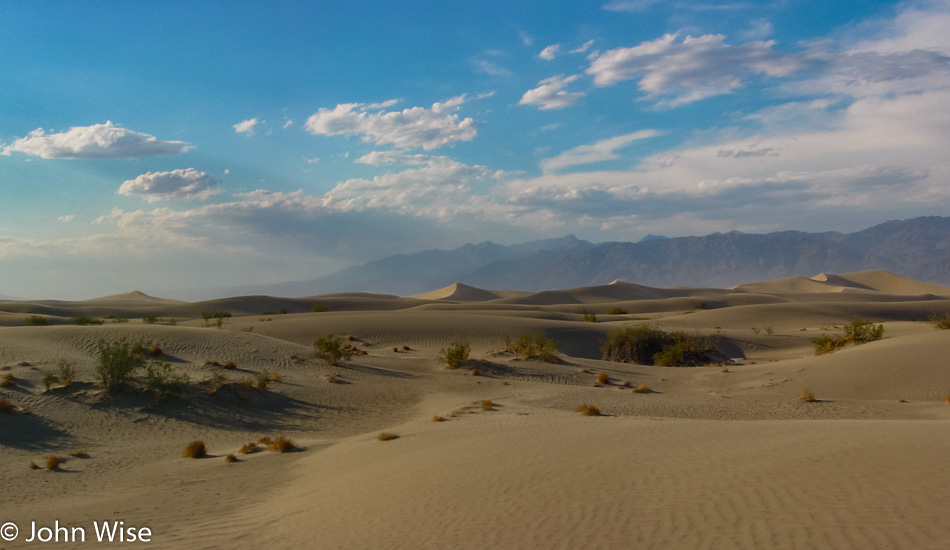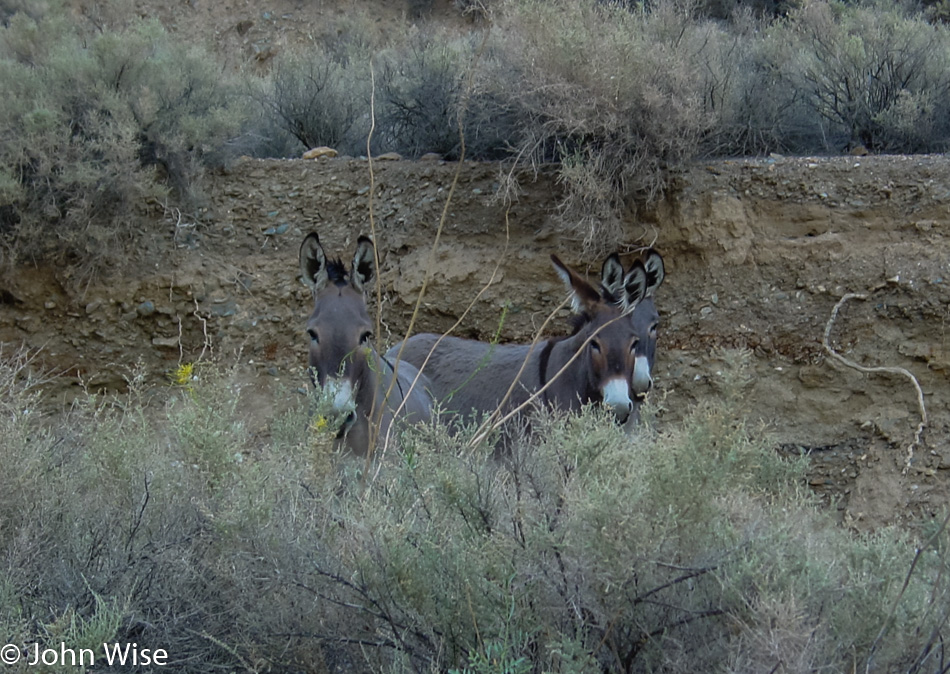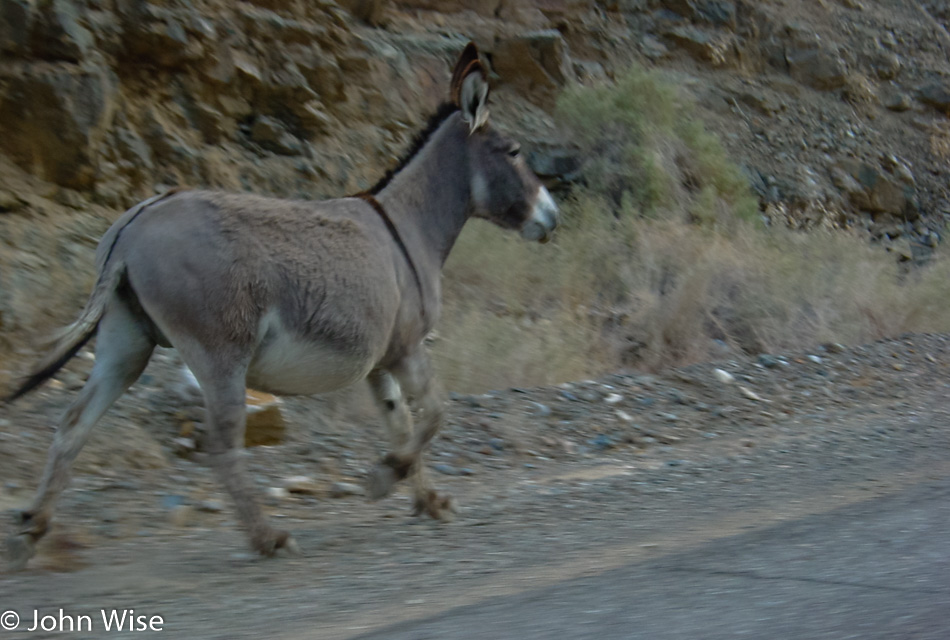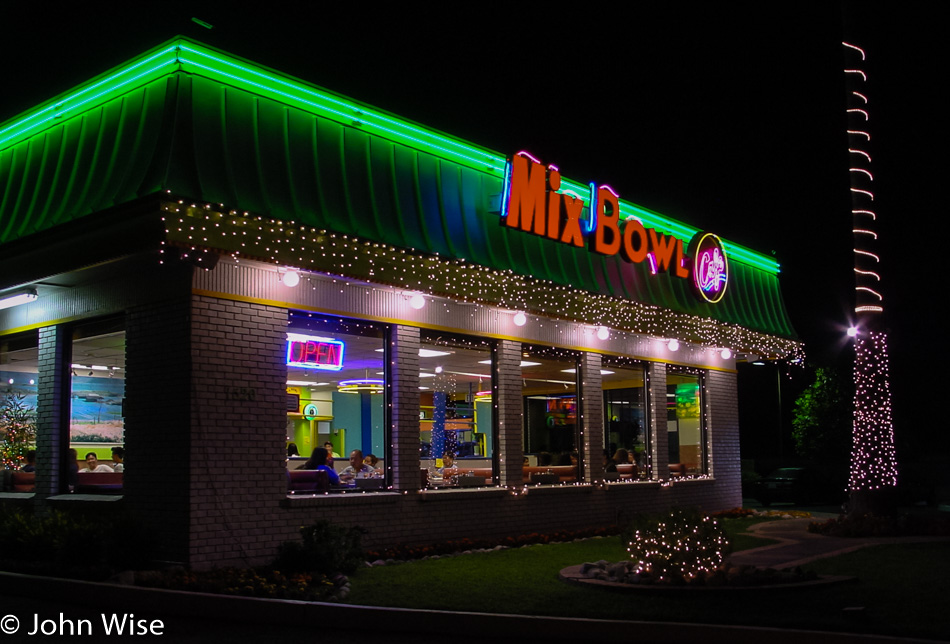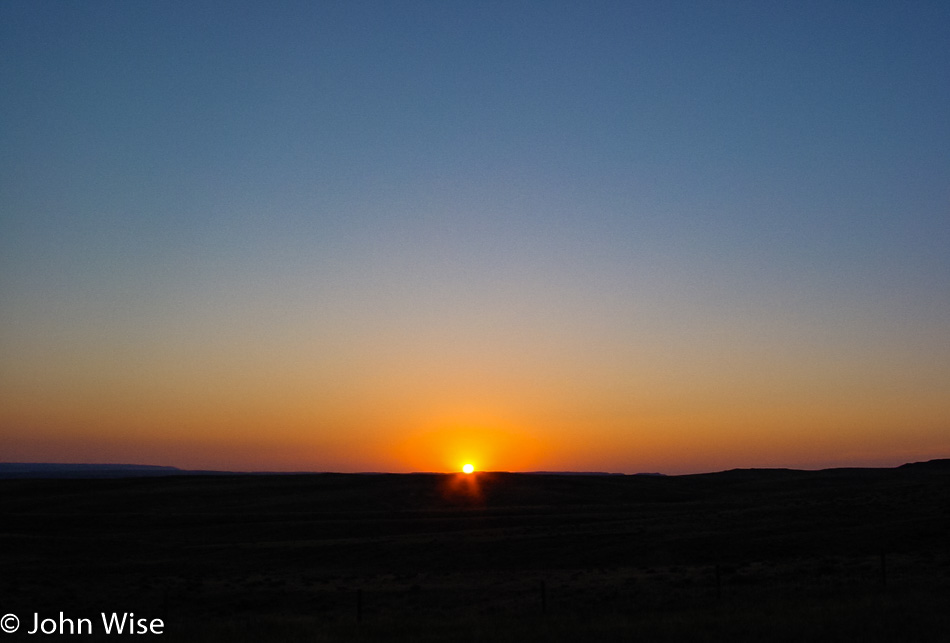
The night and day are punctuated by the beauty of the sun, turning the sky into gorgeous shades of the spectrum that strike our eyes in just a way that makes us ooh and aah. We love these travel days when we are motivated to rise early and witness these moments of dawn where the stillness and quiet are about to give way to the world reanimated.
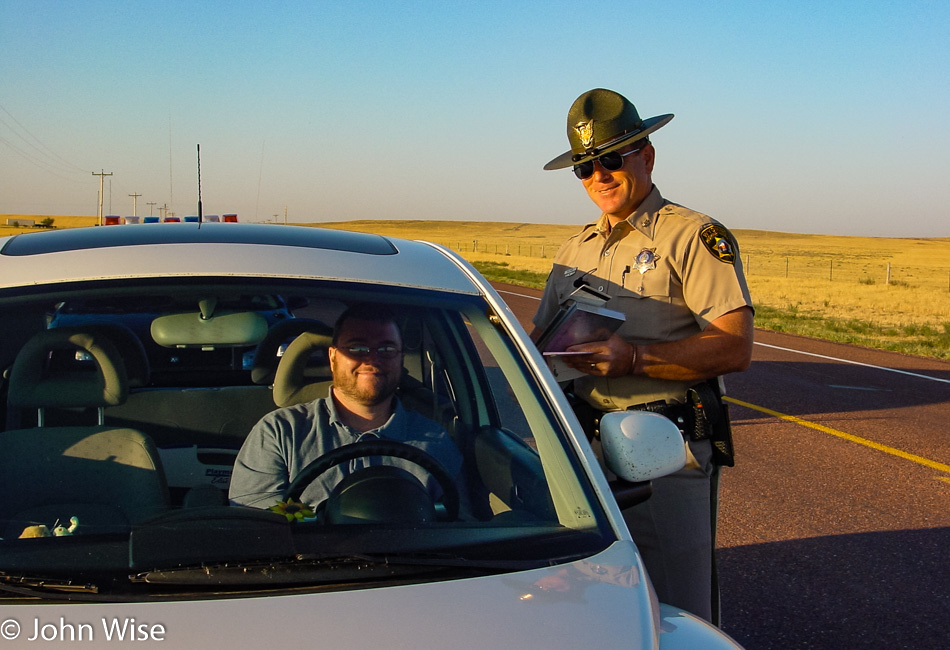
“I swear I did not see the speed limit sign or you hiding wherever it was that allowed you to come out of nowhere to give me this ticket.” Come on; we are out on the Great Plains where I can see for 100 miles; this state trooper must have been in an underground camouflaged bunker using a periscope radar to see that I was “kind of” going over the speed limit. He was a great sport in letting Caroline take his photo while he was giving me my ticket; all officers should be as nice as Wyoming troopers.
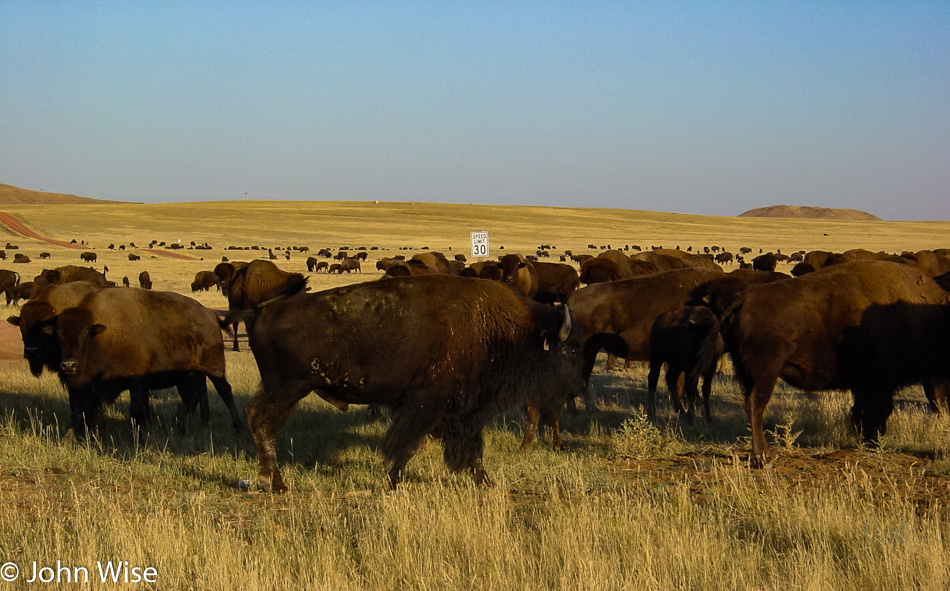
See, I told you that I couldn’t see the speed limit sign; it was behind all those bison milling around it. Come to think about this was probably some intricate speed trap, but how they trained an entire herd of bison to participate in these shenanigans is beyond my comprehension.
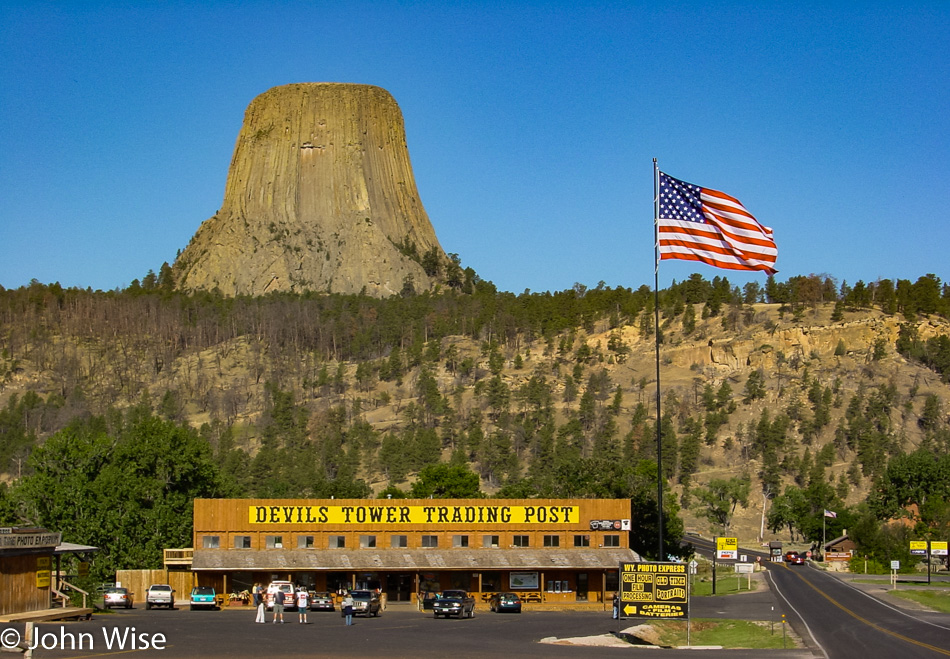
I’d like to know the statistics of how many people who visit Devils Tower National Monument have that iconic 1980s music from Close Encounters of the Third Kind in their ears.
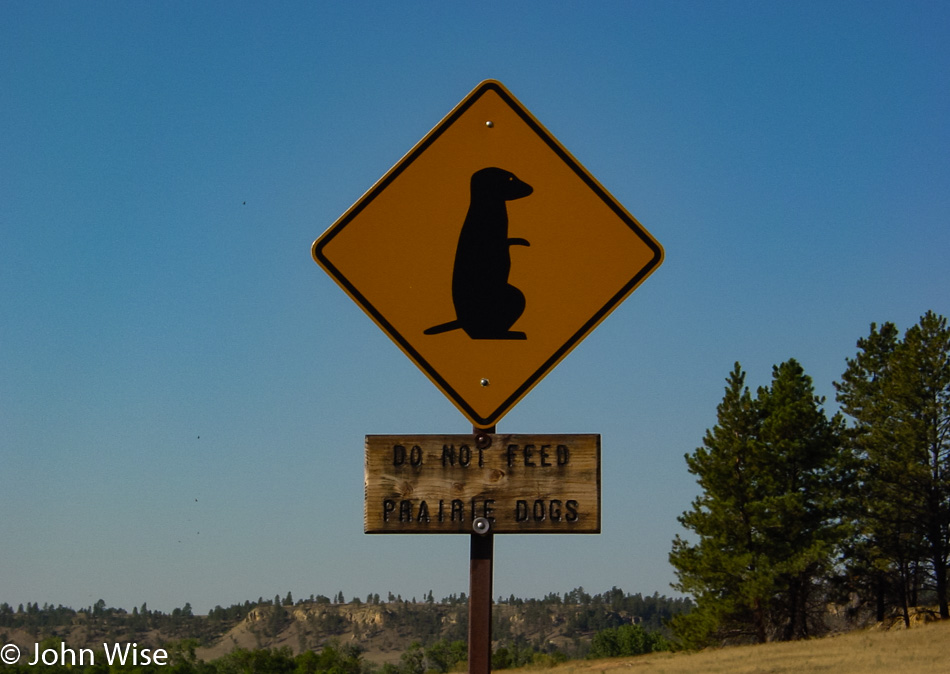
Another one of those wildlife signs that will prove disappointing because, just like the ones that warn of elk ahead or deer crossing, there obviously will not be any prairie dogs seen today that might be ready for some potato chips.
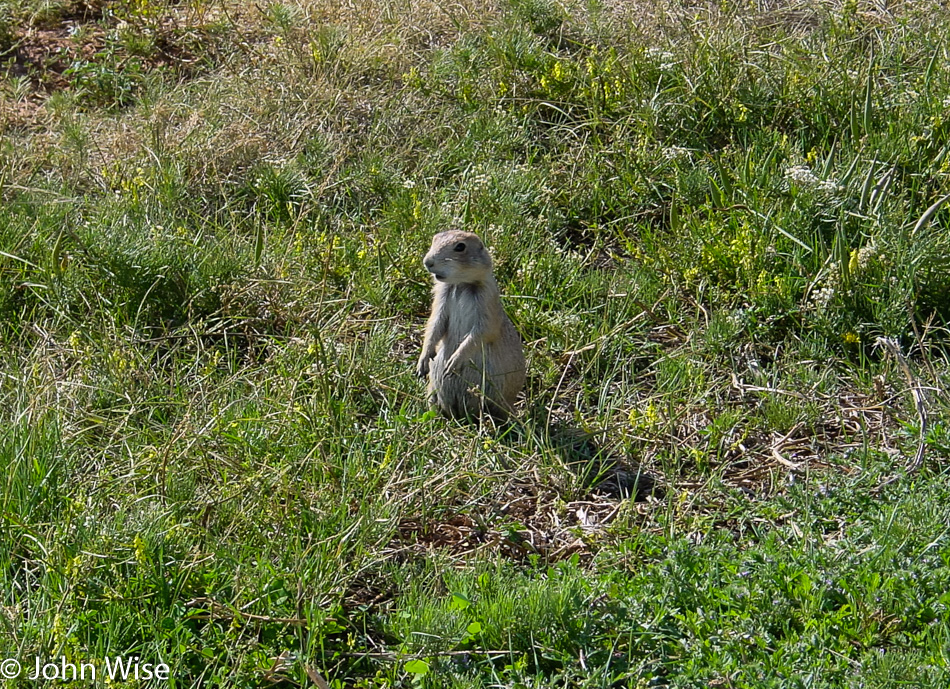
Okay, well, it looks like this one has already had his fill of potato chips. And no, Mr. Prairie Dog, it’s not the photo that makes you look bottom-heavy; you are that fat, did some kid give you their entire pizza?
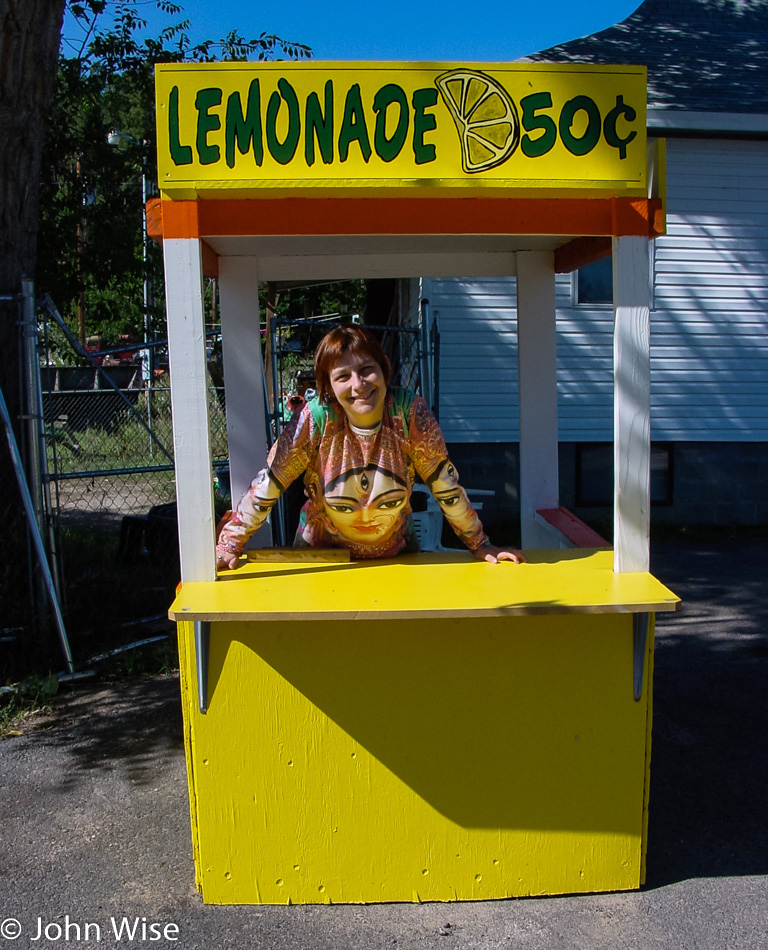
Somebody built their lucky kid the greatest lemonade stand ever! Unfortunately, there was nobody else here who had some lemonade to sell us, so we commandeered it for our photo-taking purposes.
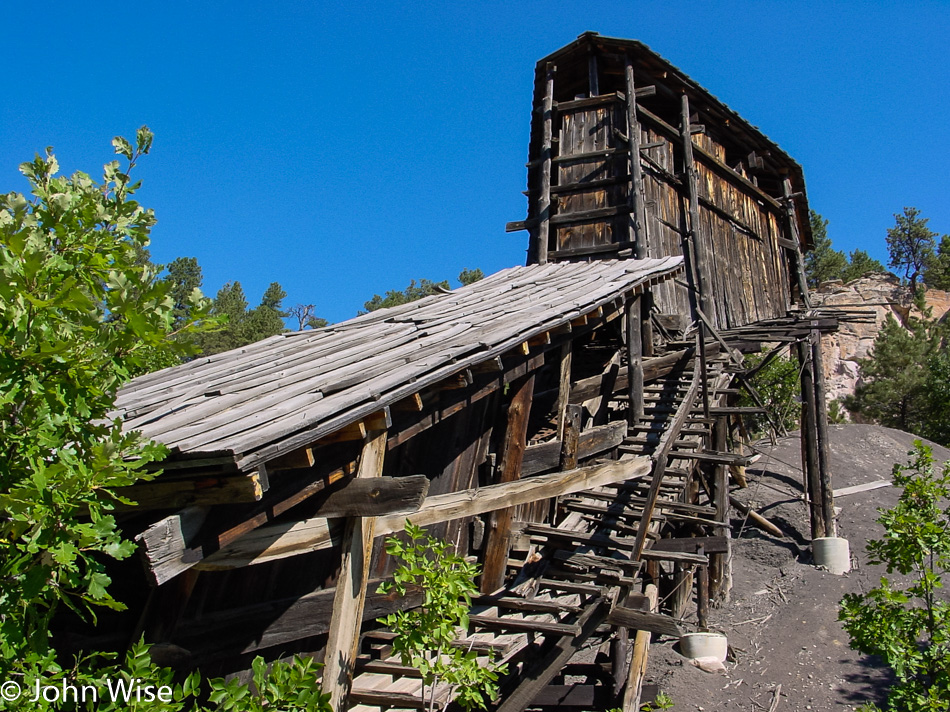
This is the Aladdin Coal Tipple, built in 1898, and when it was in use, it transferred coal to rail cars. That coal was sent through Belle Fourche, South Dakota, to gold smelters at nearby Lead and Deadwood. If you ever dreamt of visiting a tipple, I’d recommend you get busy, as this is one of the last remaining of its kind in the western United States.
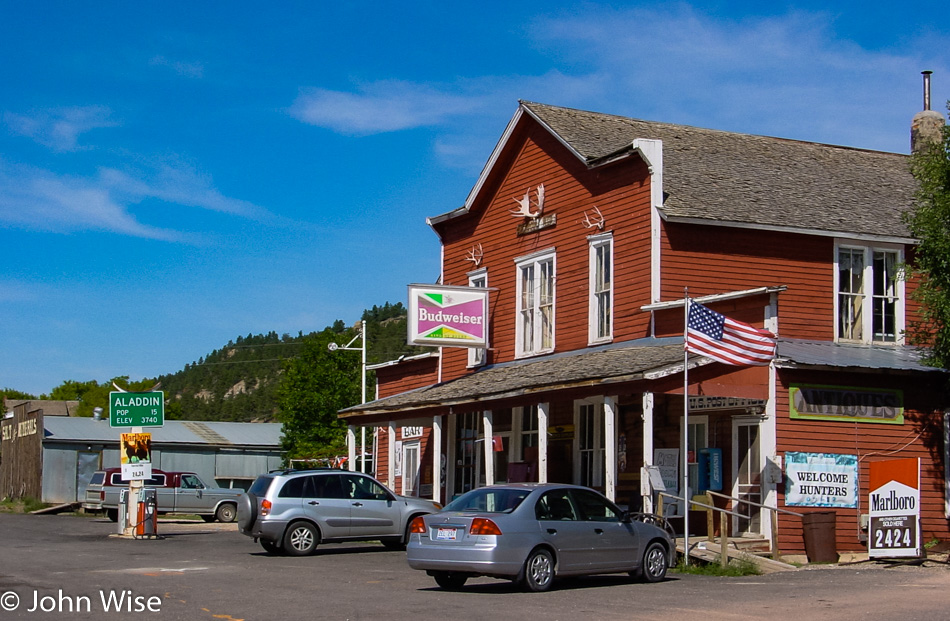
The town of Aladdin has shrunk from its coal mining days of having a population of about 200 to just 15 today. The old general store is now over 100 years old. A nice little place to stop for a drink and a treat on Wyoming Route 24.
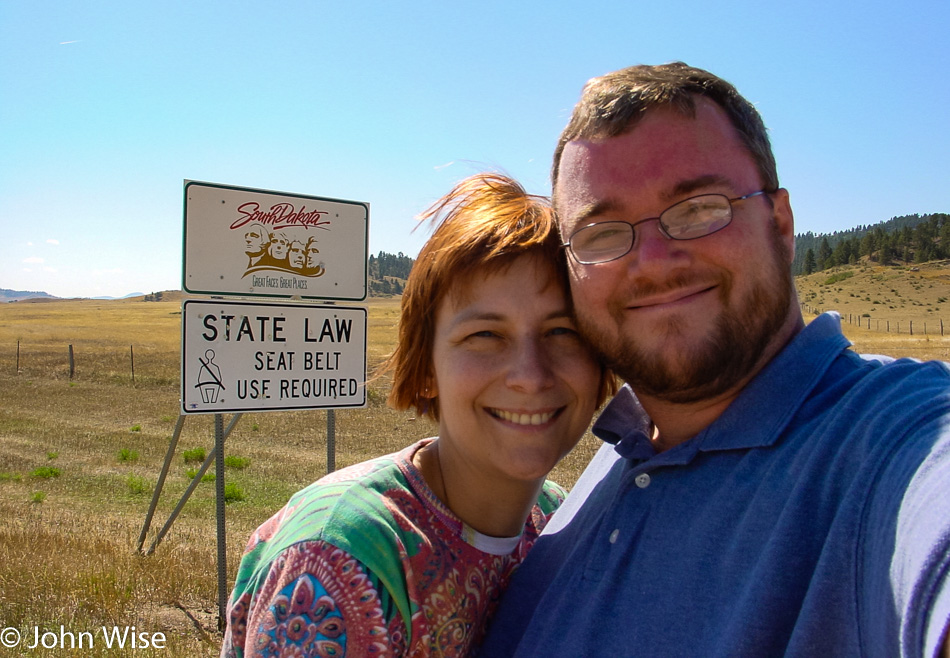
Entering South Dakota for the first time from the west because this is the “Western Edge” trip to Mount Rushmore.
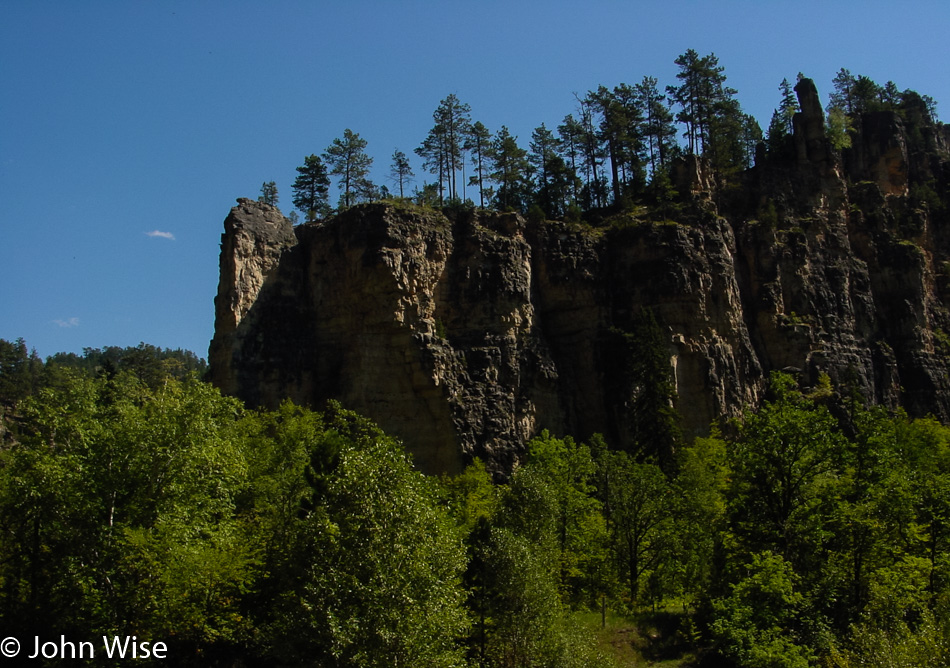
Into the Black Hills of South Dakota because this place is known for the Black Hills, and we have a deep desire to know all of these iconic places throughout America.
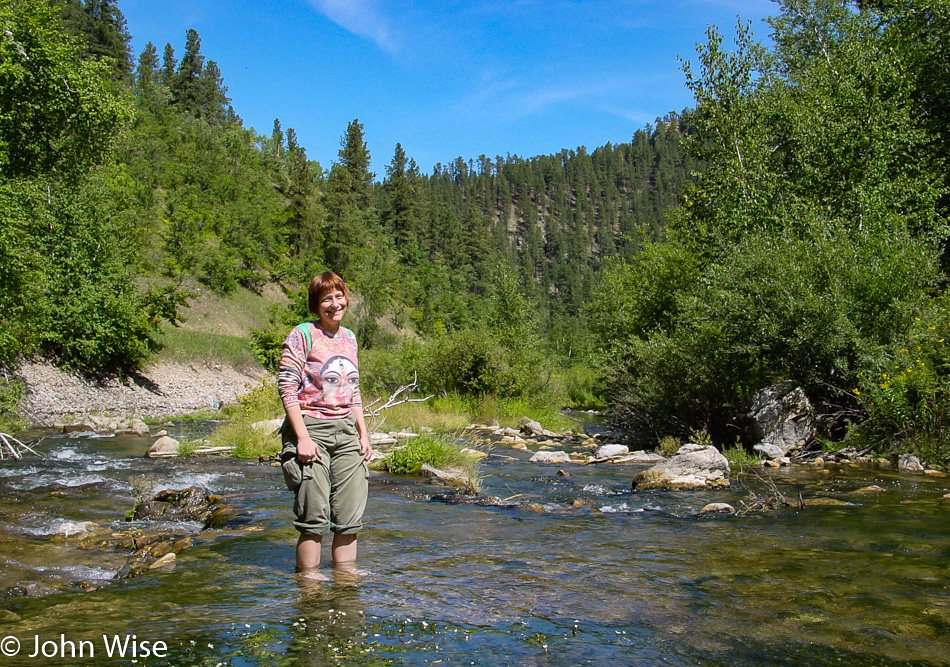
And, of course, Caroline has a deep desire to stand in as many waterways, lakes, rivers, streams, oceans, and bodies of water across America as she can.
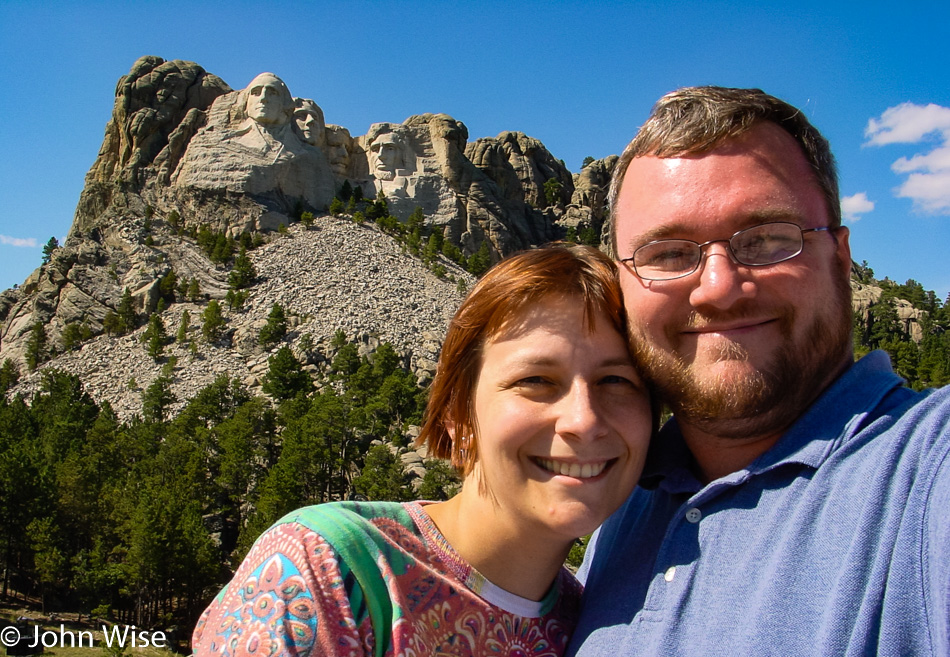
Maybe there’s a bit of cheesy factor going on here, but it’s still impressive. Caroline and I, being who we are, had to learn about the controversy of using Native American sacred lands for celebrating white Americans when we, as a country, have done little to nothing in gratitude for their sacrifices. You wouldn’t think it all that hard to offer at least an apology and an expression of gratitude to the many diverse peoples of our country in trying to modernize our magnanimity.
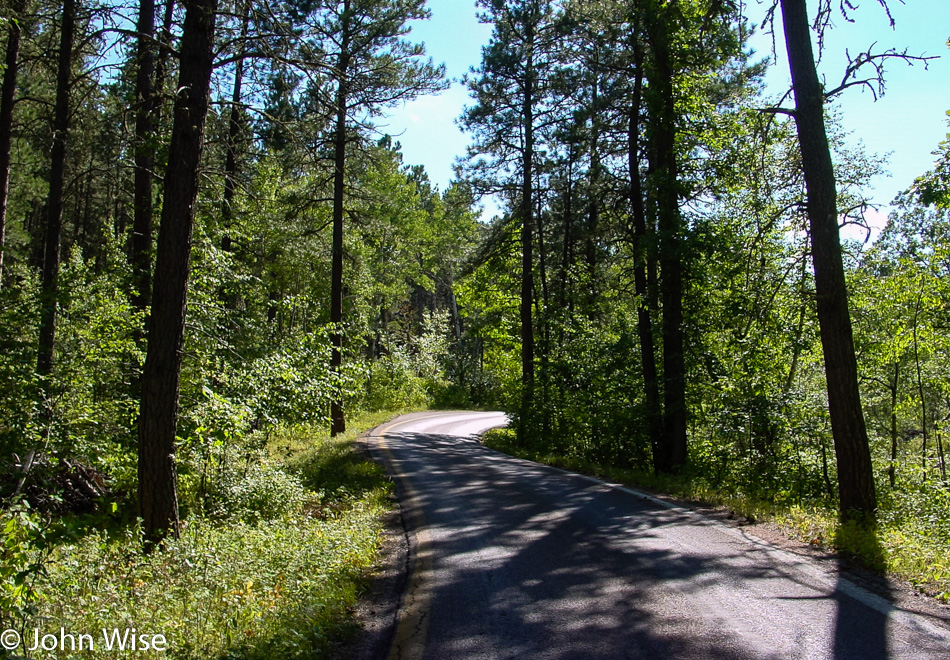
Custer State Park is as beautiful a place as one could hope for, but I do have to scratch my head that there is not one park in America named after Crazy Horse, Sitting Bull, Chief Joseph, or Geronimo. While we do have Pontiac, Michigan, the honor of those whose lands were taken for our nation remains sadly neglected.
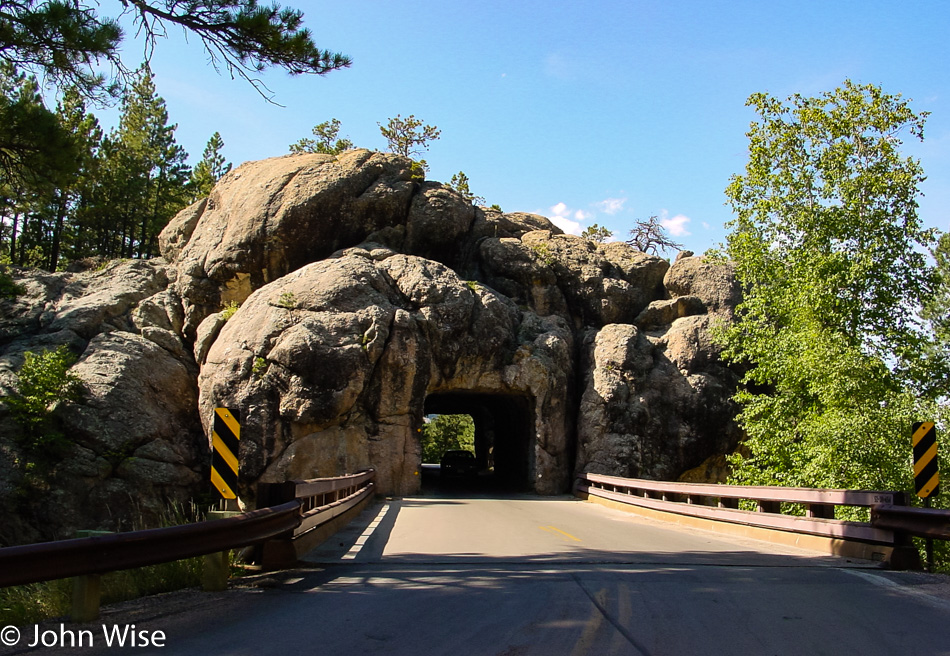
From the old wooden corkscrew bridges to tiny tunnels carved through boulders instead of being blasted to smithereens that would have allowed RV’s and small airplanes to navigate these roads, the designers and engineers responsible for the layout of Custer State Park did a great job.
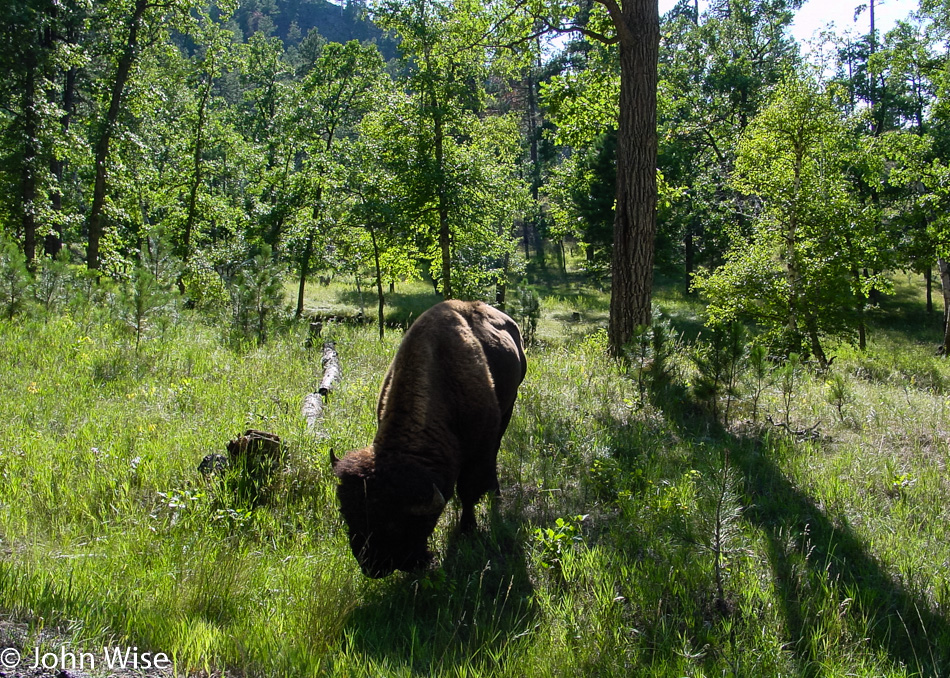
We ran into a couple of bison jams on the road, but this solitary one grazing in the shade won the “Bison of the Day” award.
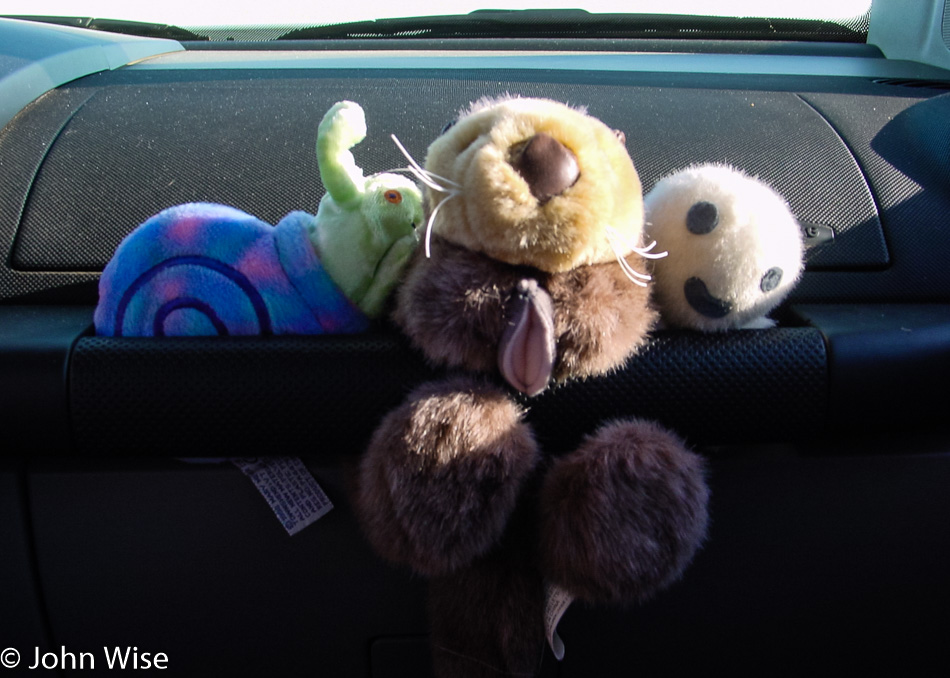
The snail was named “State of Maine” because we bought it while in Belfast, Maine, at the Purple Baboon back on our first cross-country road trip. The otter travels with us from the Monterey Bay Aquarium in Monterey, California, and if I’m not mistaken, the Kodama from the movie Princess Mononoke was picked up at Kinokuniya bookstore in Los Angeles, California.
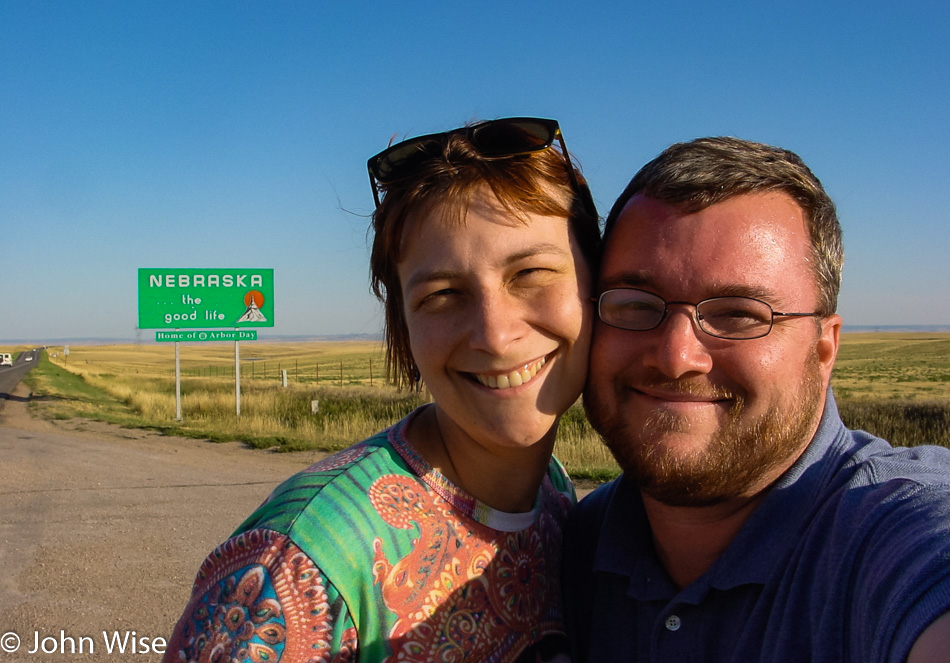
Out collecting states, making sure we see as much of America as possible. That’s our motto, and I believe we’re doing pretty good living up to it.
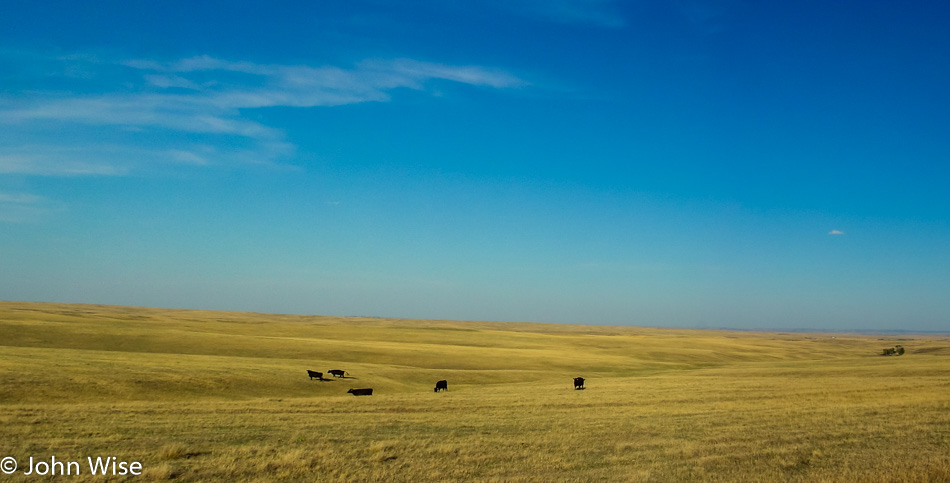
Cattle on the windswept Great Plains. By the time we get home, we’ll order “The Great Plains” by Ian Frazier after falling in love with these sights and the idea that, at one time, there were seas of bison out here that painted the landscape black with their numbers. Hopefully, we’ll get a chance to read Steinbeck’s “Grapes of Wrath” before our next visit.
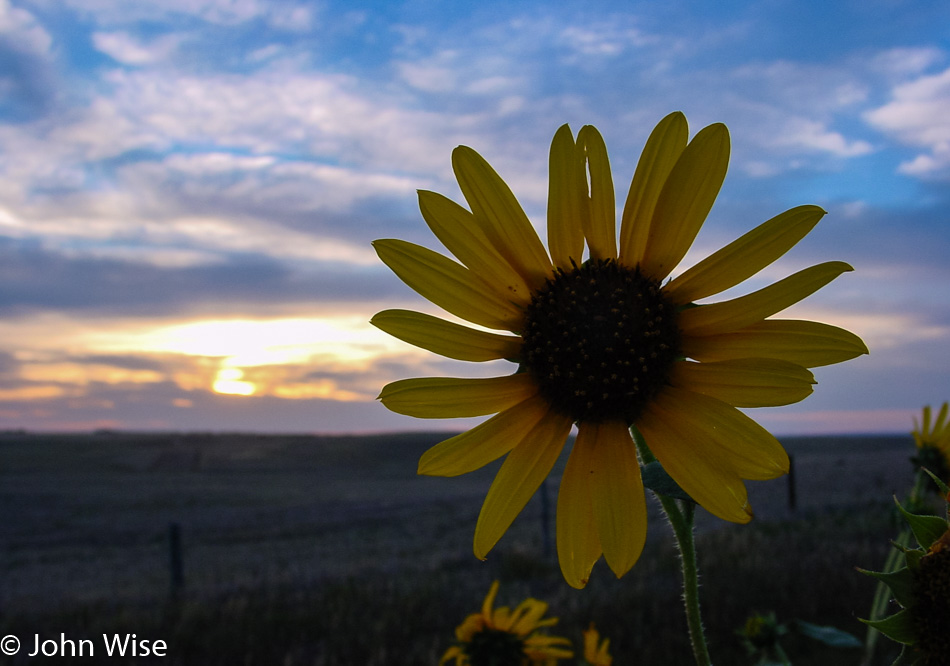
What would a visit to Nebraska be without sunflowers at sunset?
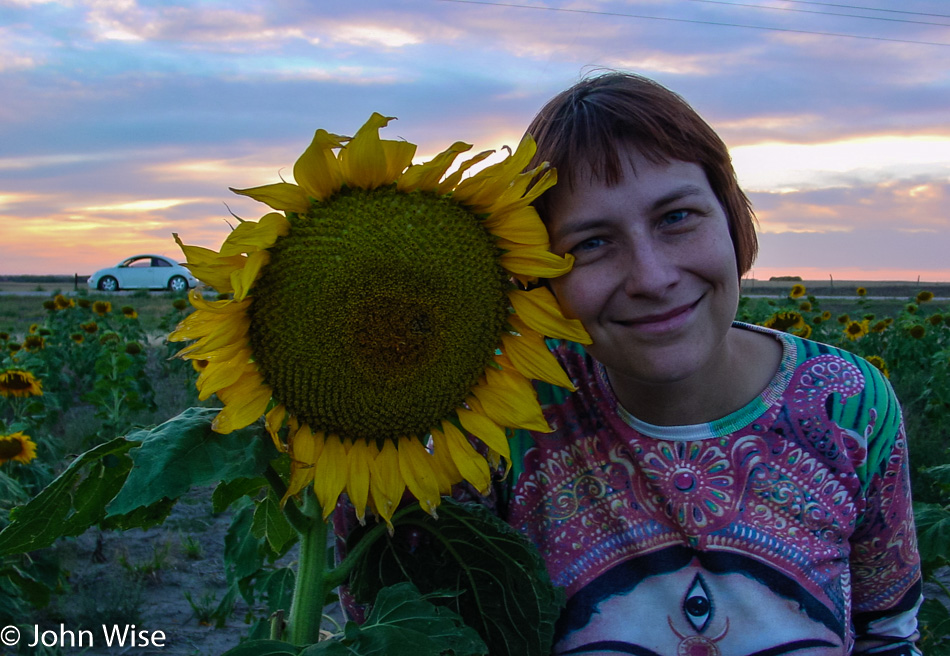
It would be nothing if I couldn’t beat that with the largest sunflower I’ve ever seen, along with my wife’s smiling face.
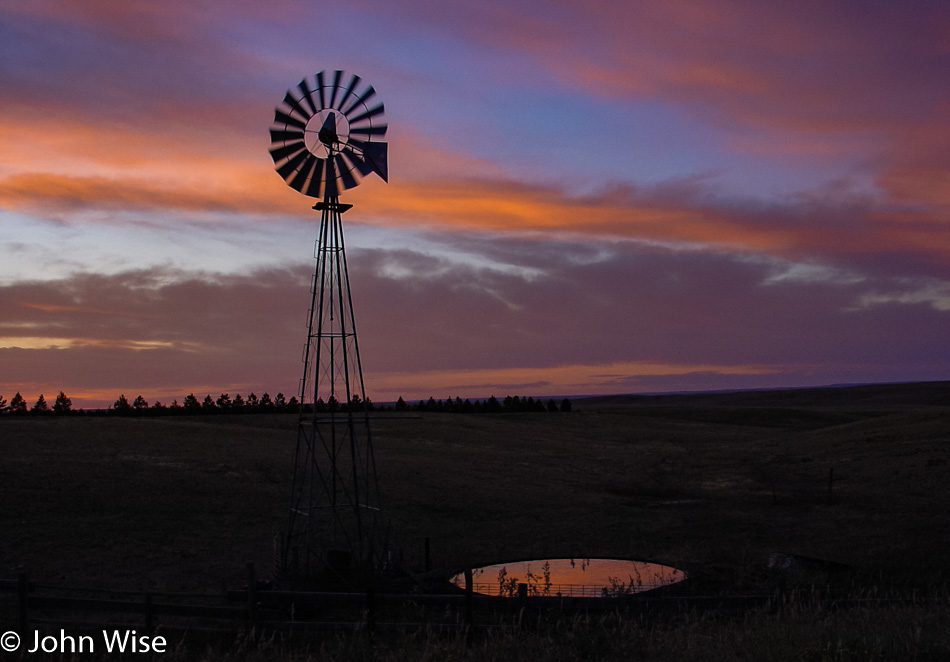
The metallic clang of the windmill spinning at dusk against the purple and red sky makes for a perfect close to an extraordinary day where it felt like we experienced three or four days all smushed into one.
